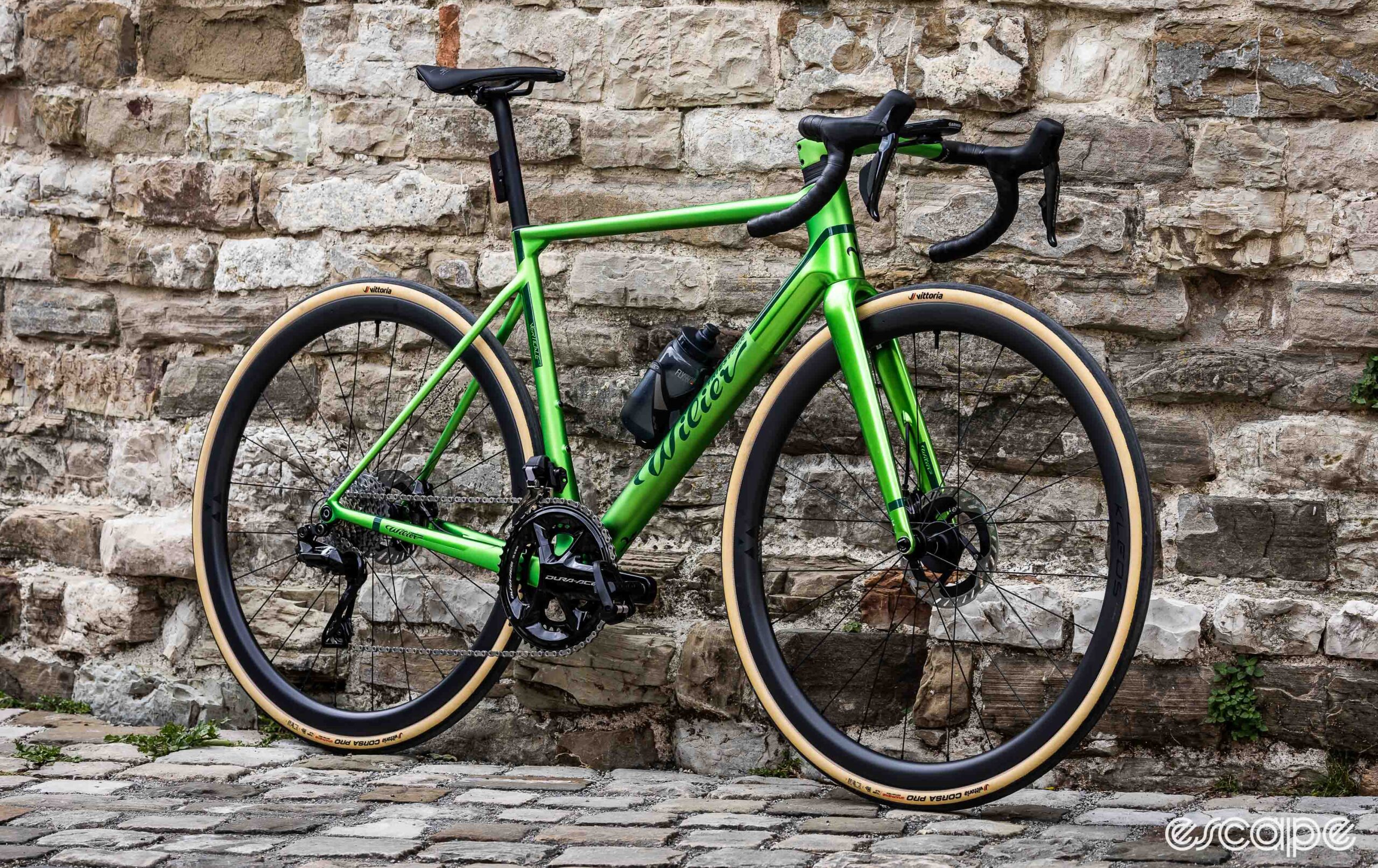When the Tour de France kicks off in Florence this weekend there’ll be more than a little hint of the late Marco Pantani about it. Stage 1 finishes in Rimini where tragically Pantani was found dead, and the Monte Carpegna climb he regularly trained on will be visible to the riders during the stage. Stage 2 starts in Cesenatico close to the Monumento a Marco Pantani and not far from his home town of Cesena. There’s even a giant marble housing a Pantani figurine outside the old Mercatone Uno headquarters along the motorway between the stage 2 start and the finish in Bologna, a leftover from the days the now-defunct supermarket chain sponsored the cycling team made famous by “Il Pirata.” The marble has never been removed despite the building now changing hands, such is the respect and admiration for Pantani in the region.
That’s not to mention the unavoidable fact that Tadej Pogačar has perhaps the best chance of anyone in recent history to become the first rider to win the Giro d’Italia and the Tour in one season since Pantani in 1998.
But for all those Pantani links, the Tour and especially the bikes riders race today have changed dramatically since the days when Pantani danced up the climbs. Now Wilier is bringing back some of the magic of those Pantani days with a new dedicated climbing bike, the Verticale SLR.
The short of it: A modern take on the lightweight climbing bike with little or no consideration for aero but stacks of appeal.
Good stuff: Classic look, superb ride, stock tyre and cassette choice, light for a disc brake bike but only with the right build, a bike most of us could enjoy but not a bike for today’s World Tour racing speeds in my book.
Bad stuff: The price, wheels leave a little to be desired, heavier than expected out of the box, fully internal rather than external and hidden cable routing, electronic groupsets only.
Pricing: frame module €5,800 / £5,500 / US$6,900. Complete with Shimano Dura-Ace Di2 and SRAM Red AXS (both including power meters) €13,000 / £12,500 / US$15,300. Campagnolo Super Record Wireless €13,400 / US$15,700. Ultegra Di2 and Force AXS €9,900 / £9,000 / US$12,100
Sizes: XS-XXL
Weight: 6.8 kg (size large tested, no pedals)
More info: wilier.com
The basic shape and wheel count remain is about all that a bike from 1998 and 2024 still share. The ubiquitous uptake of carbon fibre, disc brakes, wider tyres, deeper rims, electronic gears, and, of course, the most visibly obvious change – the influence of aerodynamics – all mean the bikes are vastly different these days.
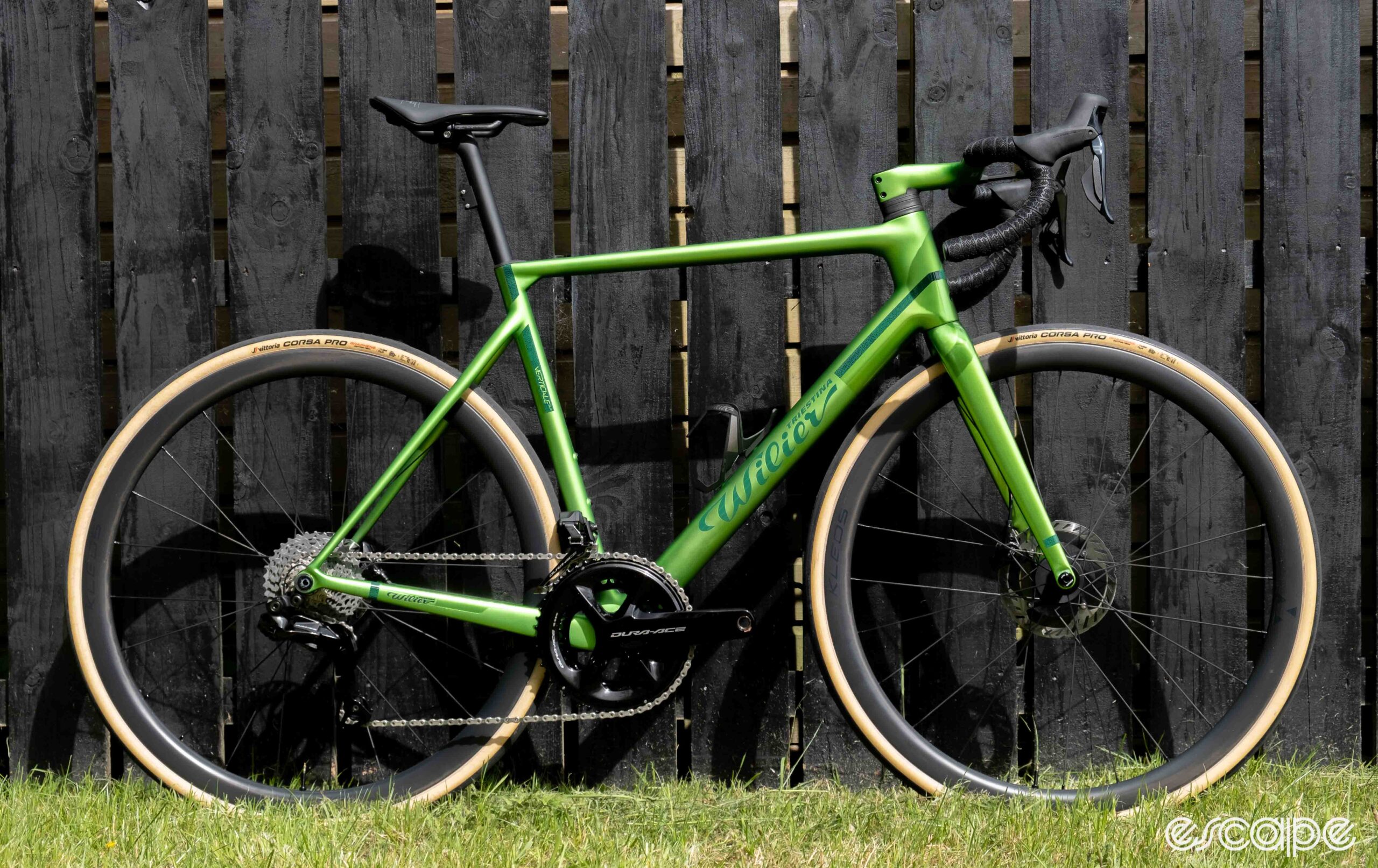
What was old is now new again, though, as the Verticale SLR is a lightweight dedicated climbing bike with mostly round tubes from a heritage brand name that, despite the enduring Bianchi connection, was once also Il Pirata’s dancing partner. With round-looking tubes, high seat stays, and an almost horizontal top tube, it’s a classic-looking bike in a sea of Kammtails, speed sniffers, and teardrops.
But does such a bike still have a place in the modern peloton? Spoiler alert: I’m not so sure, but having had the Verticale for the past month, and I’m sure much to everyone’s surprise given my own aero-optimising tendencies, it’s one of the few bikes in the peloton I’d spend my own money on.
Lighter, stiffer, climb-ier?
The new Verticale SLR replaces the Zero SLR, Wilier’s existing climbing bike launched in 2019, and sticks with the same light weight, stiffness, and climbing focus. According to Wilier it improves in all three areas. The brand was more than happy to lean into its Pantani links in both the bike’s launch materials and the press camp visit to the Carpaena climb Pantani used to train on and so perhaps unsurprisingly, if not a little odd for a race bike in 2024, there is absolutely no mention of aerodynamics or any drag-reducing features.
Instead, Wilier claims the raw materials – along with four key elements it says must work together to reduce weight and enhance performance: the handlebar, fork, geometry, and of course the frame – are what is critical for a climbing bike.
Let’s start with the frame, or as is so often the case these days, the frame module, including fork, seat post, and handlebars. The headline claimed weight figure shows a decrease of 8.5% from the 1,819-gram Zero SLR module to the 1,663-gram Verticale system. Breaking that down further, a size medium, painted Verticale frame is said to weigh 720 grams, which is close to an 80-gram saving on the claimed weight of the Zero. While those 80 grams are probably the equivalent of a few spoons of porridge pre-ride, it is nevertheless a significant weight saving from one generation frame to the next by today’s standards.
Wilier claims the use of three different types of carbon from Toray, namely T800, T1100 (both adding high tensile strength), and a high-modulus M46JB (said to bump torsional stiffness) makes these weight savings possible while still maintaining the overall desired stiffness profile. Unsurprisingly, Wilier wouldn’t elaborate on how and where exactly these various ply types are used in the layup when we asked. It did, however, point to the use of its “Active Moulding System,” a new, but not exclusive to Wilier, method of compacting the fibres inside the mould using polymer counter-moulds, which adapt shape and volume to the materials during the cure cycle for improved precision.
All that is to say the new frame is both lighter and stiffer than the Zero and usually that is a good combination for going-uphill bikes. But thankfully there’s a bit more to the new frame module than just some new carbon hidden beneath a fancy paint job. Most obvious is the somewhat classic look, but there are plenty of other smaller details worth a mention.
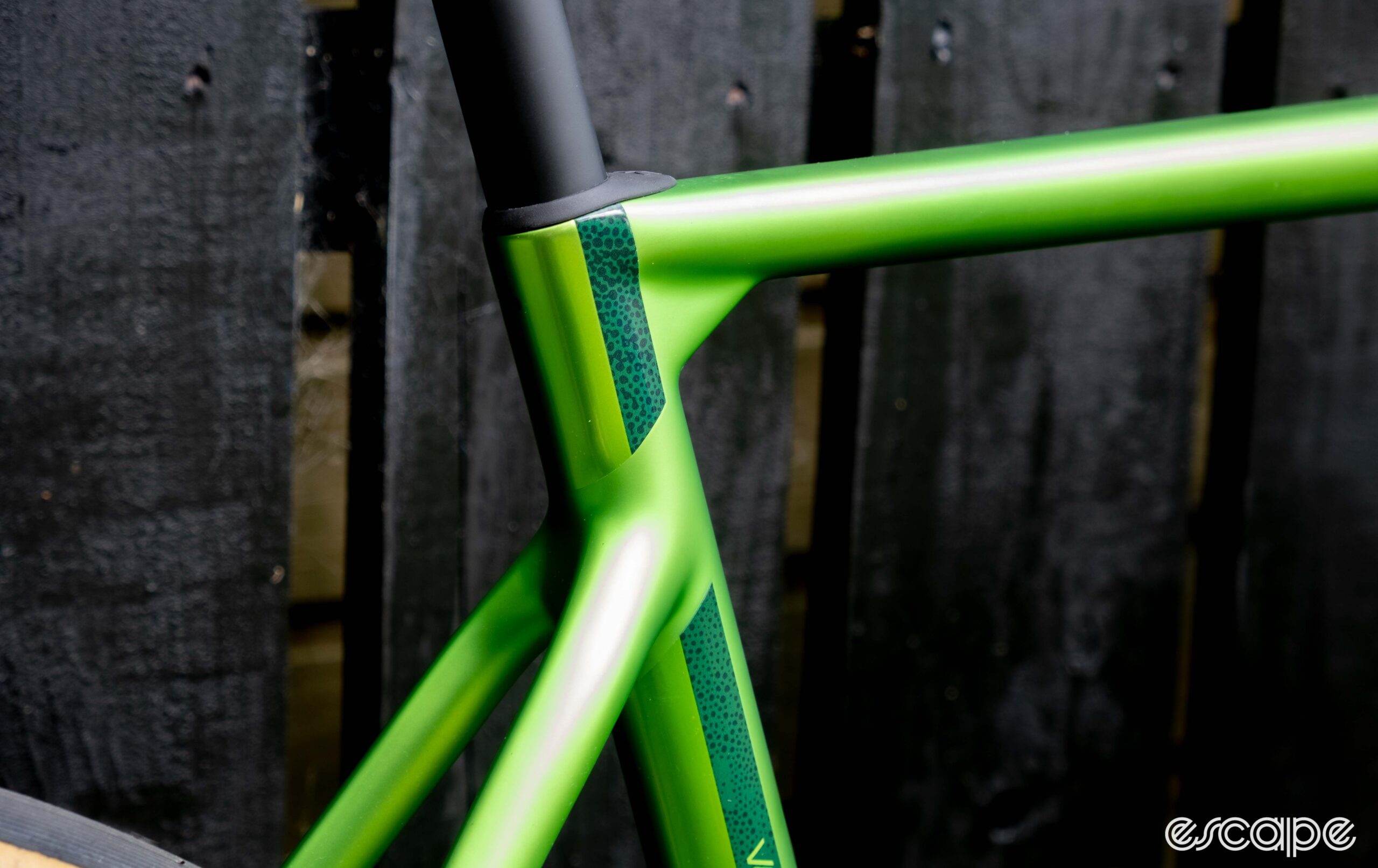
Perhaps the most appropriate place to start is with the much neater and less obvious seat post clamp Wilier has incorporated a on the underside of the top tube, replacing the rather unsightly version on the Zero SLR’s top tube. While the new clamp is aesthetically a big improvement, Wilier claims it is also a little lighter.
Speaking of marginal weight savings, the Verticale also features a new dual-position front derailleur mount. Wilier had requests from its pro teams to create mounts which assist the front derailleur in shifting across an ever wider range of chaining sizes and the new removable, dual position mount on the Verticale follows a similar – although different in design – solution as found on the new Wilier Supersonica TT bike revealed just a couple of weeks ago. The mount is not just removable but also height-adjustable to accommodate better shifting with various chainring combinations and compatibility with outer chainrings from 48 to 56 teeth. Wilier was also able to shed a few more grams from the new mount.
There are other similarly minor but nevertheless noteworthy weight-saving endeavours dotted all over the Verticale. Wilier’s house components brand, Miche (yes that Miche with 100+ years of history; Wilier acquired the brand a few years back), provides lightweight thru-axles with four sections milled out along the centre of the axle front and rear in a bid to shed a few more grams. Finally, in what must go down as the most marginal of savings ever, Wilier managed to save a claimed two grams from the rear brake caliper mount by redesigning it and stripping out excess material between the heads.
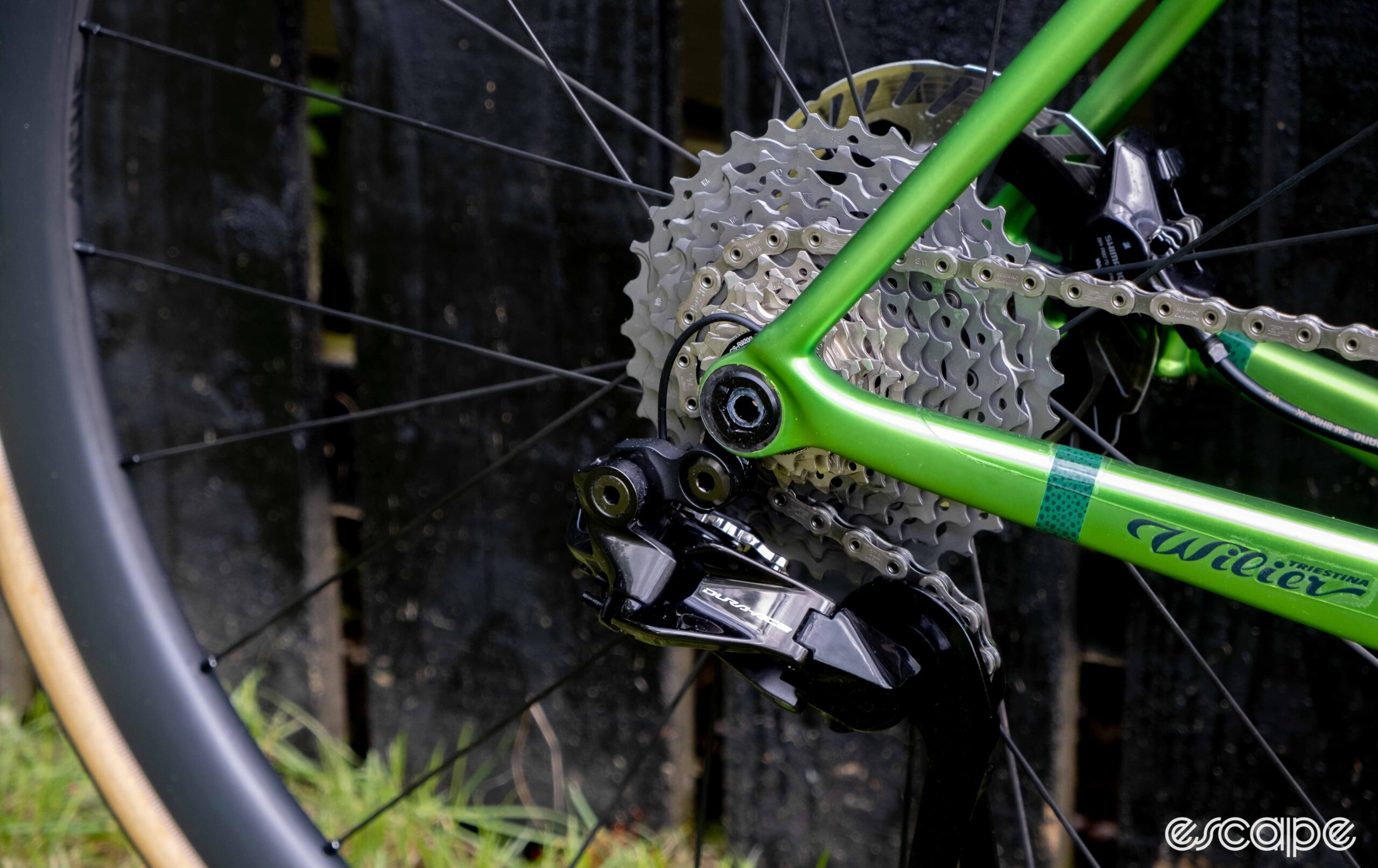
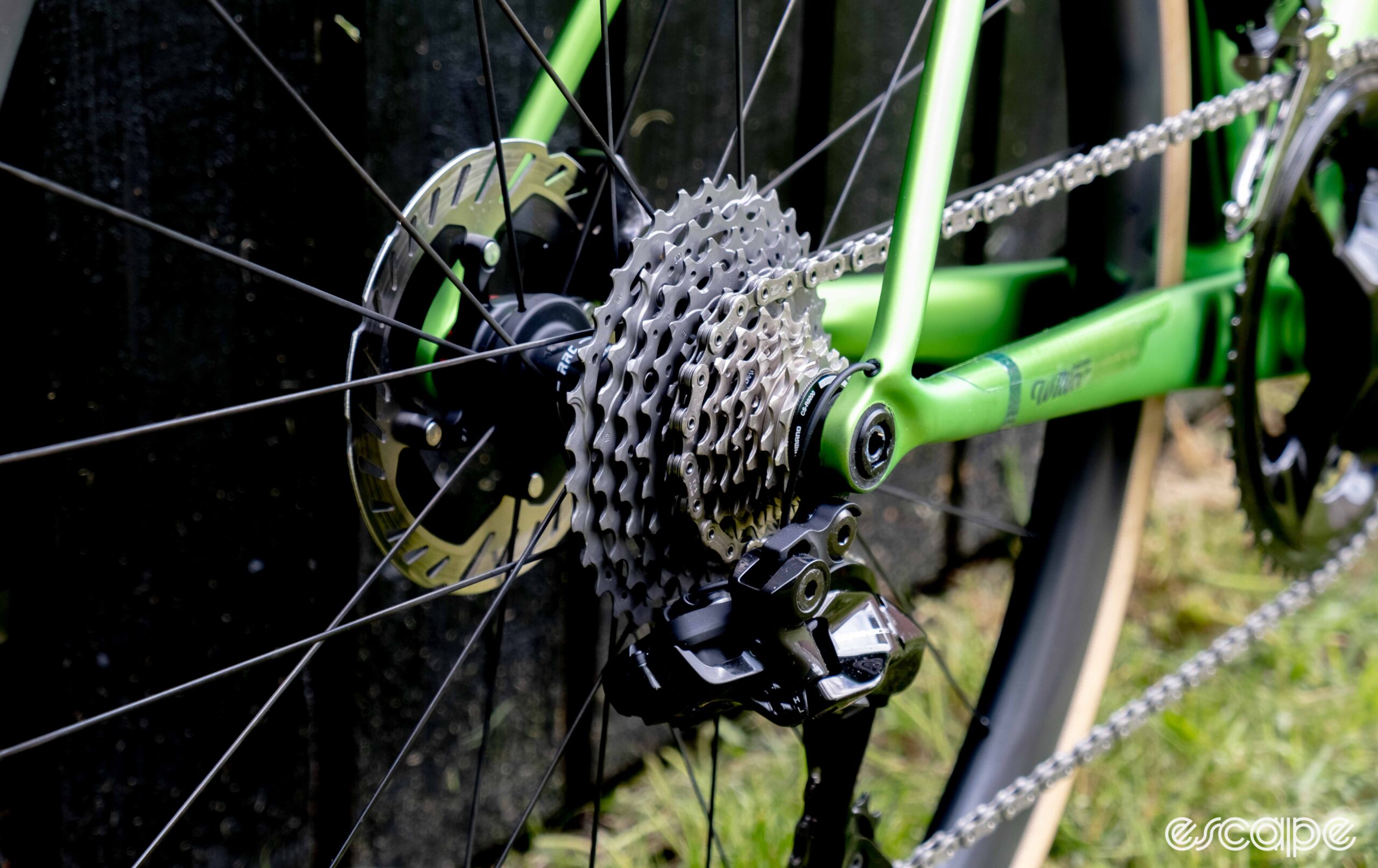
Sticking with the rear end, Wilier developed its own dropout and derailleur hanger, which is somewhat similar to SRAM’s UDH but not UDH-compatible. The two-piece hanger sandwiches the frame threads together through the dropout in a similar manner to UDH and Wilier claims this concept helps greatly improve rear triangle stiffness. The design also allows Wilier to offer a regular hanger and a Shimano-specific direct-mount option.
As for tyre clearance, the new bike will officially clear 32 mm with the required 4 mm of ISO clearance all around. Wilier incorporated an asymmetrical chainstay design with taller, thicker, non-drive-side stays paired to thinner drive-side stays in a bid to balance the tyre clearance, stiffness, and chainring clearance juggling act.
Finally, on frame specs, the Verticale has an almost-but-not-quite-round seat post which is available with either 0 mm or 15 mm setback options. That seat post also comes with a neat integrated rear light option that importantly adds zero extra weight when not attached (it screws into a removable boss inside the seat post) and is also interchangeable with a frame number mount. Neat! Thankfully Wilier is also working on a Garmin Varia integration as the Variable mount I have is too loose on this extremely narrow post. Not a Verticale problem, very much a Varia problem.
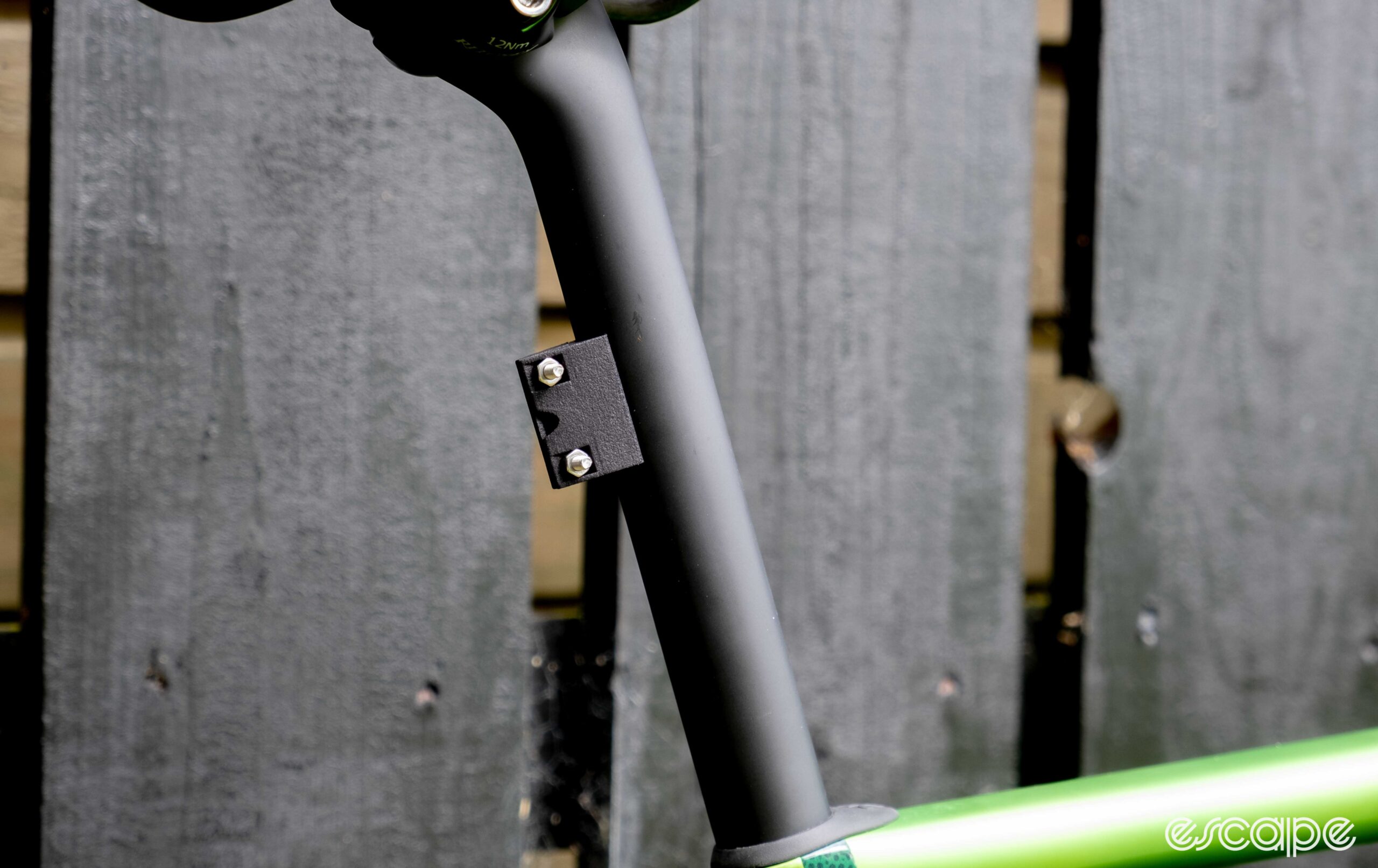
Fork it
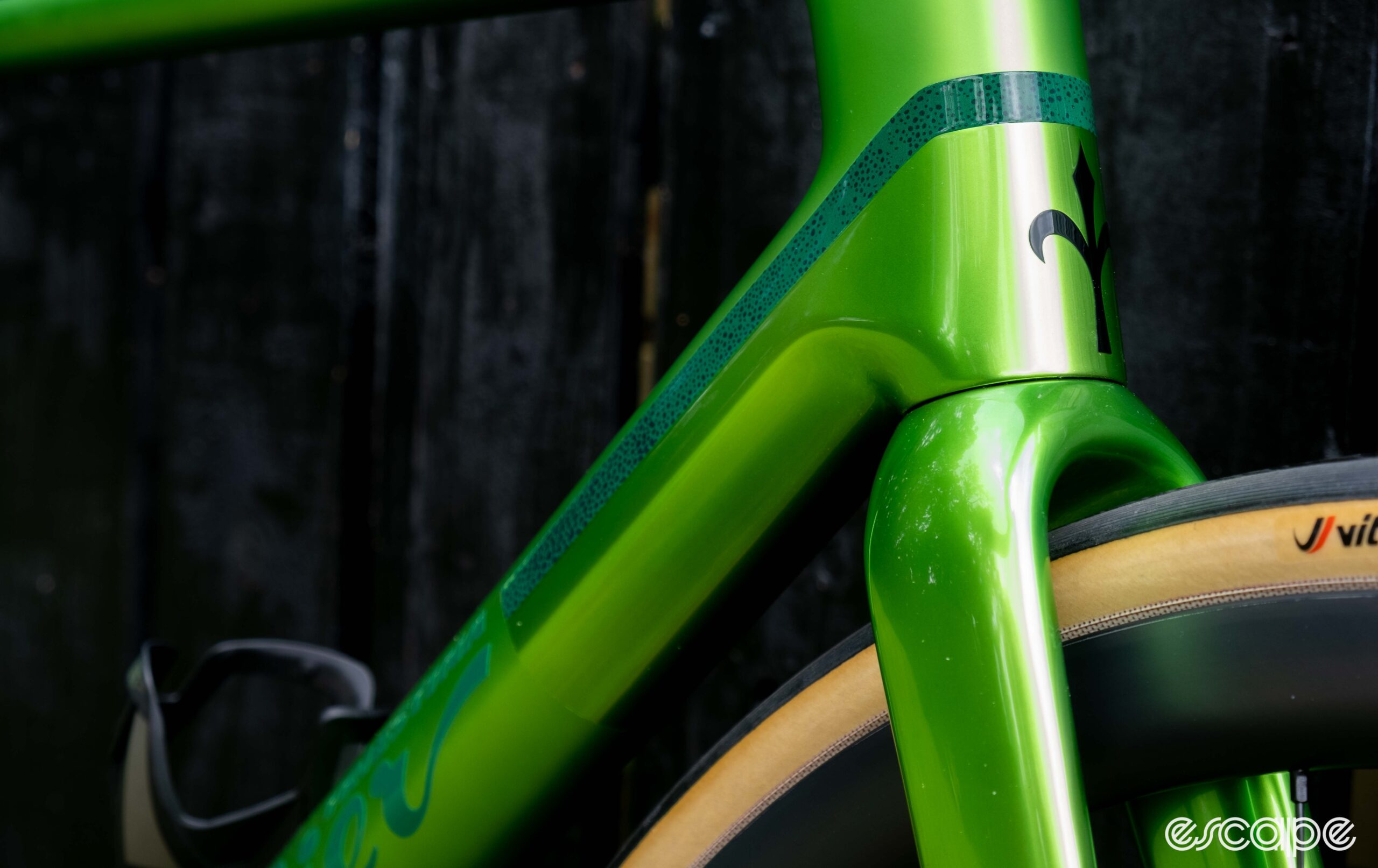
Then there is the fork, and again the Verticale adopts a fairly standard-looking profile in a world of ever-increasing fork leg depths and decreasing widths. While those deeper and thinner blades are designed to cut through the air, Wilier paid particular attention to the crown in the belief this transition zone between the fork legs and steerer is critical in overall performance due to the forces exerted on the area during use.
The new fork gets a cone-shaped fork crown; not exactly revolutionary, but Wilier says it has incorporated that crown much higher than what is typically seen to improve the “mechanical continuity between the fork sleeve and the fork crown.” In simpler terms, the result is a fork head and lower bearing that sit ever so slightly higher in the head tube. Wilier didn’t make any claims as to whether this might help with bearing longevity, focusing instead on what it believes is a design that offers better handling performance.
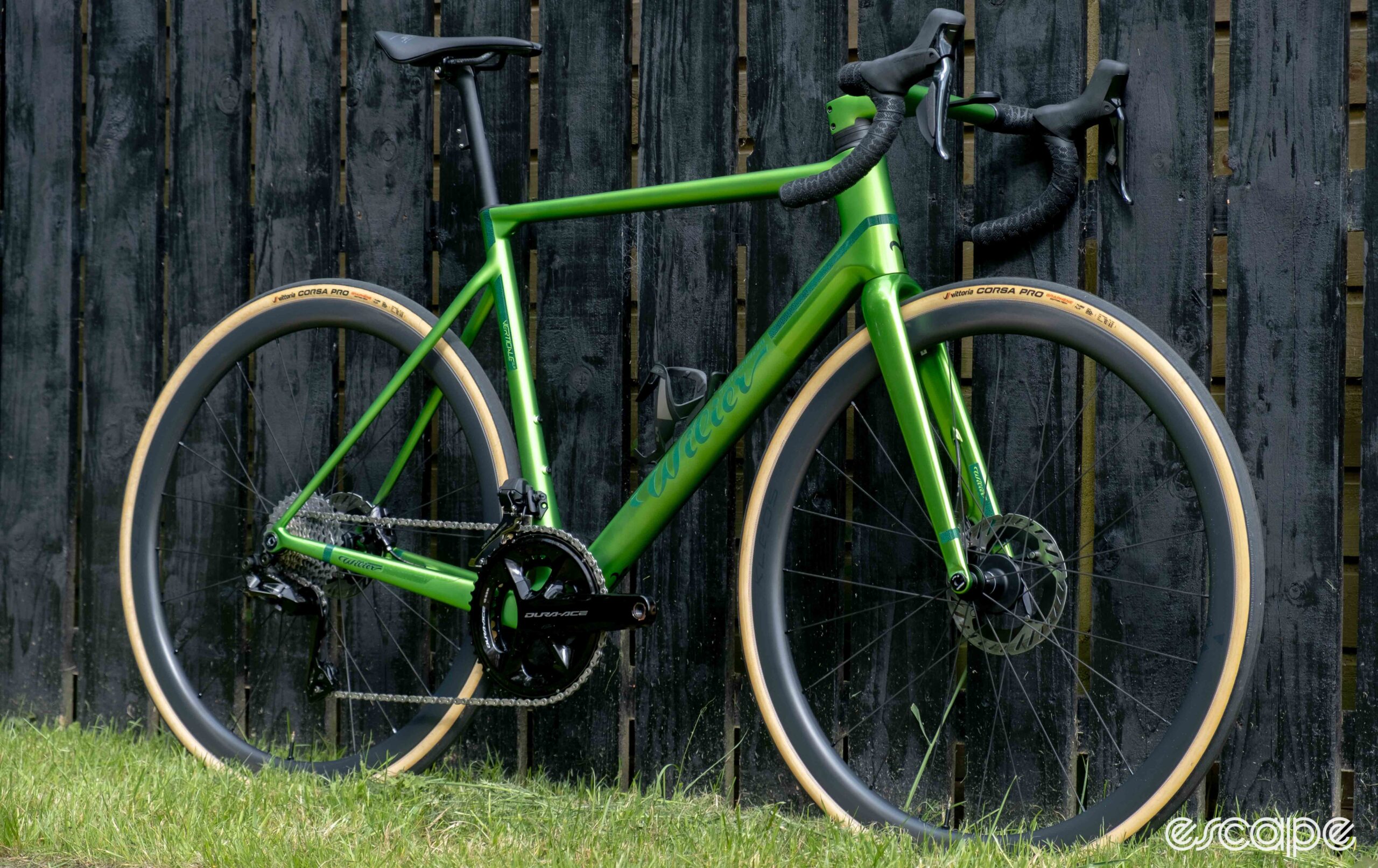
There are also other, more visible, updates to the new fork, including an asymmetrical design which sees the brake caliper side considerably oversized versus the lighter and thinner drive-side/non-braking side. This braking side oversizing, coupled with a new feature Wilier describes as a “twisted” orientation of the carbon fibres during rolling, is said to better resist braking forces and, combined with a Kammtail design, both improves fork stiffness and also the “overall feeling during braking” with no mention of any aero gains.
You’re barred
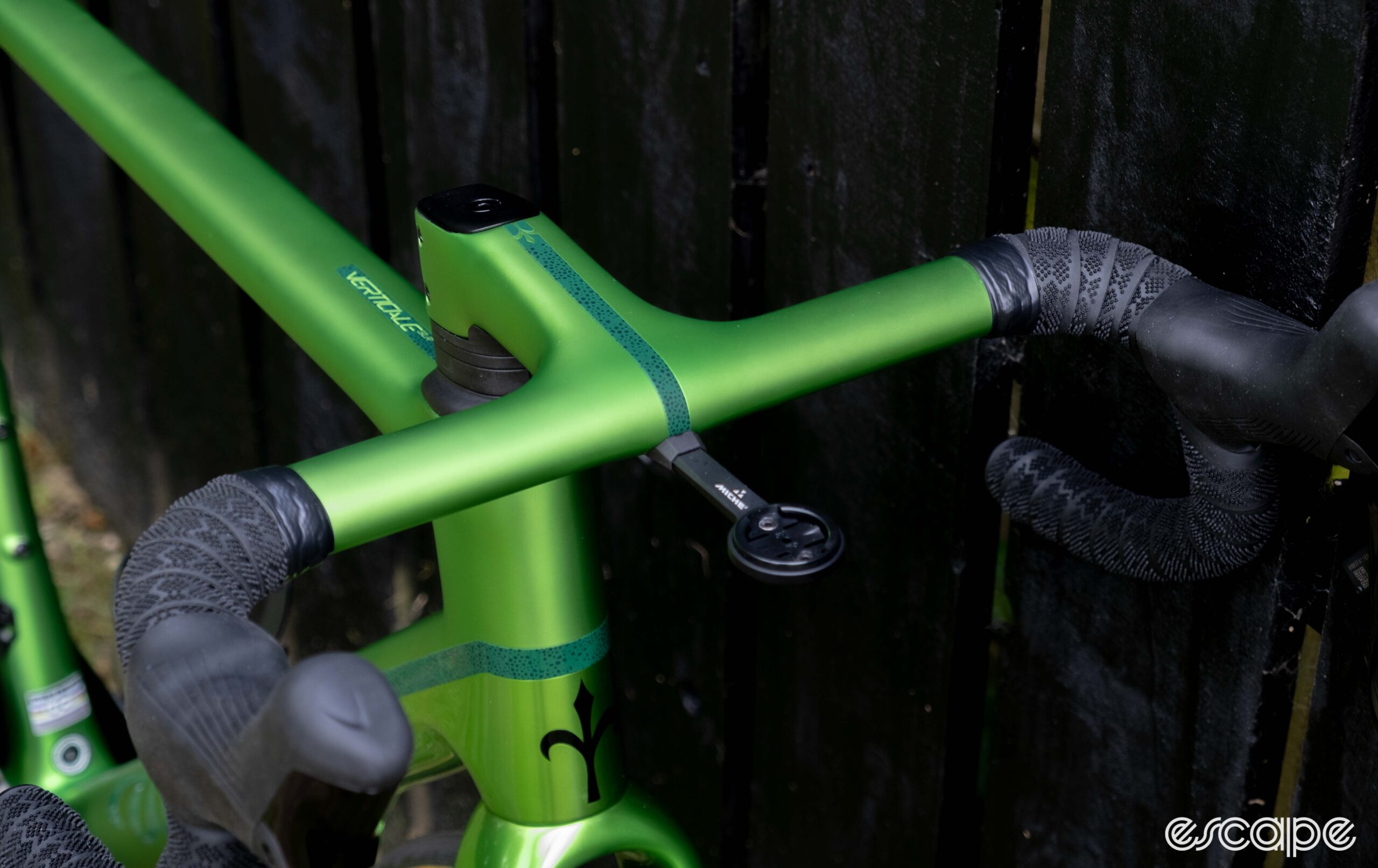
The Verticale also gets a new integrated bar/stem design which is both lighter and narrower than previous Wilier offerings. The new bike and bars are cross-compatible with Wilier’s other high-end frame and bar offerings, with the new “V-Bar” itself focused purely on weight and ergonomics but matched with a narrow and flared shape which Wilier hopes will allow the rider to adopt a more aero position and achieve much greater aero gains than any profiling on the bar itself could.
Key to this positional element is a reduction in width at the hoods coupled with a 30 mm-wider drop for a control and sprinting position. The new bar is available in six sizes with a 370/400 mm bar mated to both a 90 and 100 mm stem, while the wider 390/420 mm width bar comes in four stem length options from 110 mm to 150 mm, in 10 mm increments.
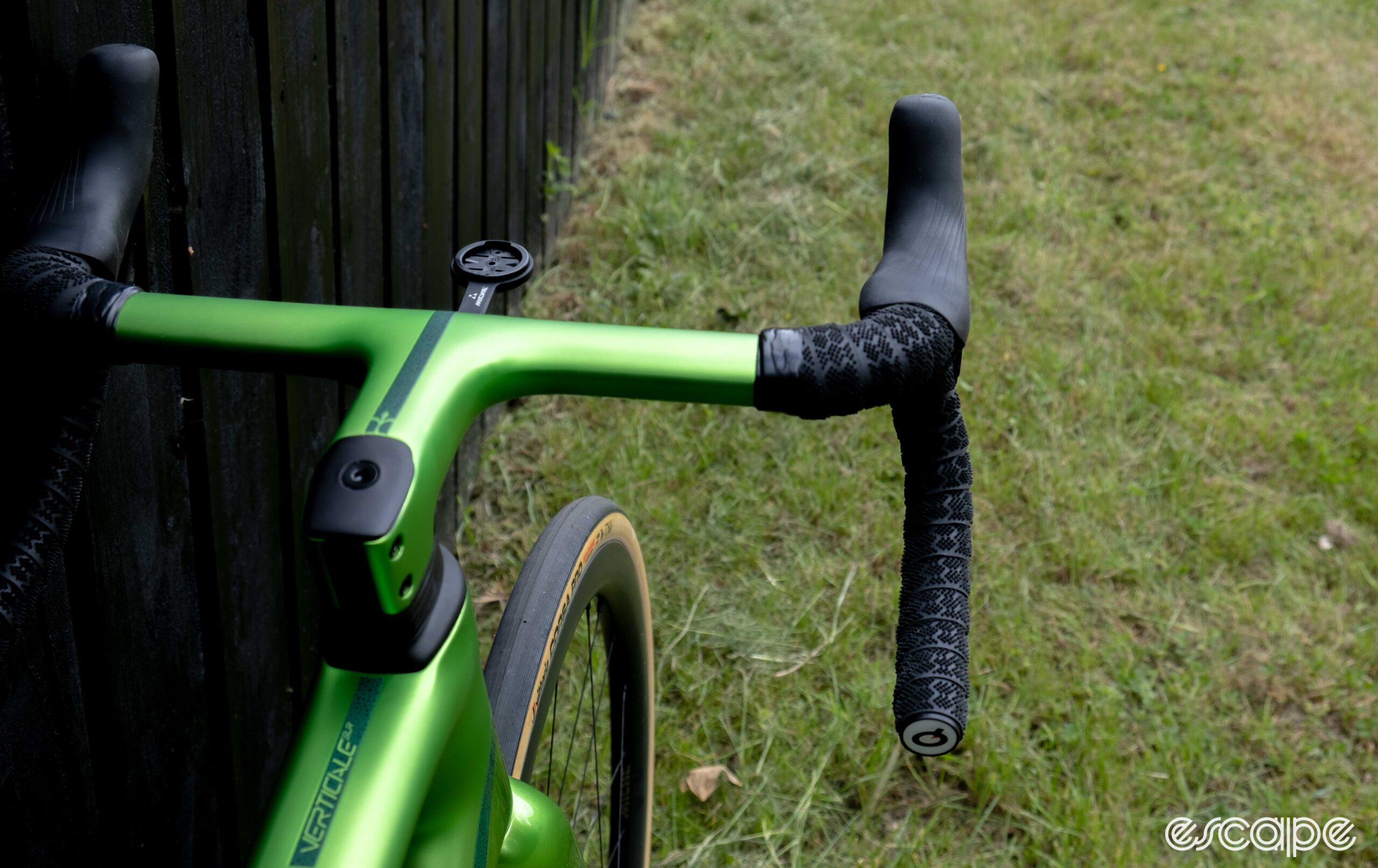
It’s not exactly fair to describe the drops as flared, given that all the width increase comes in a single S-bend just below the levers, meaning riders can still adopt a straight lever position if they so wish. The useable section of the drops also retains a relatively straight grip position unlike a typically flared drop which “aggressively inclines” the drops, levers, hands, everything.
A head unit mount isn’t usually worthy of a mention, but Wilier’s new design is rather noteworthy in that it slides directly into a slot on the front of the handlebar and is retained with two screws through the underside of the bar. Wilier claims this design makes for a lighter overall package. While it does feel more secure, it does eliminate any room for angle adjustment.

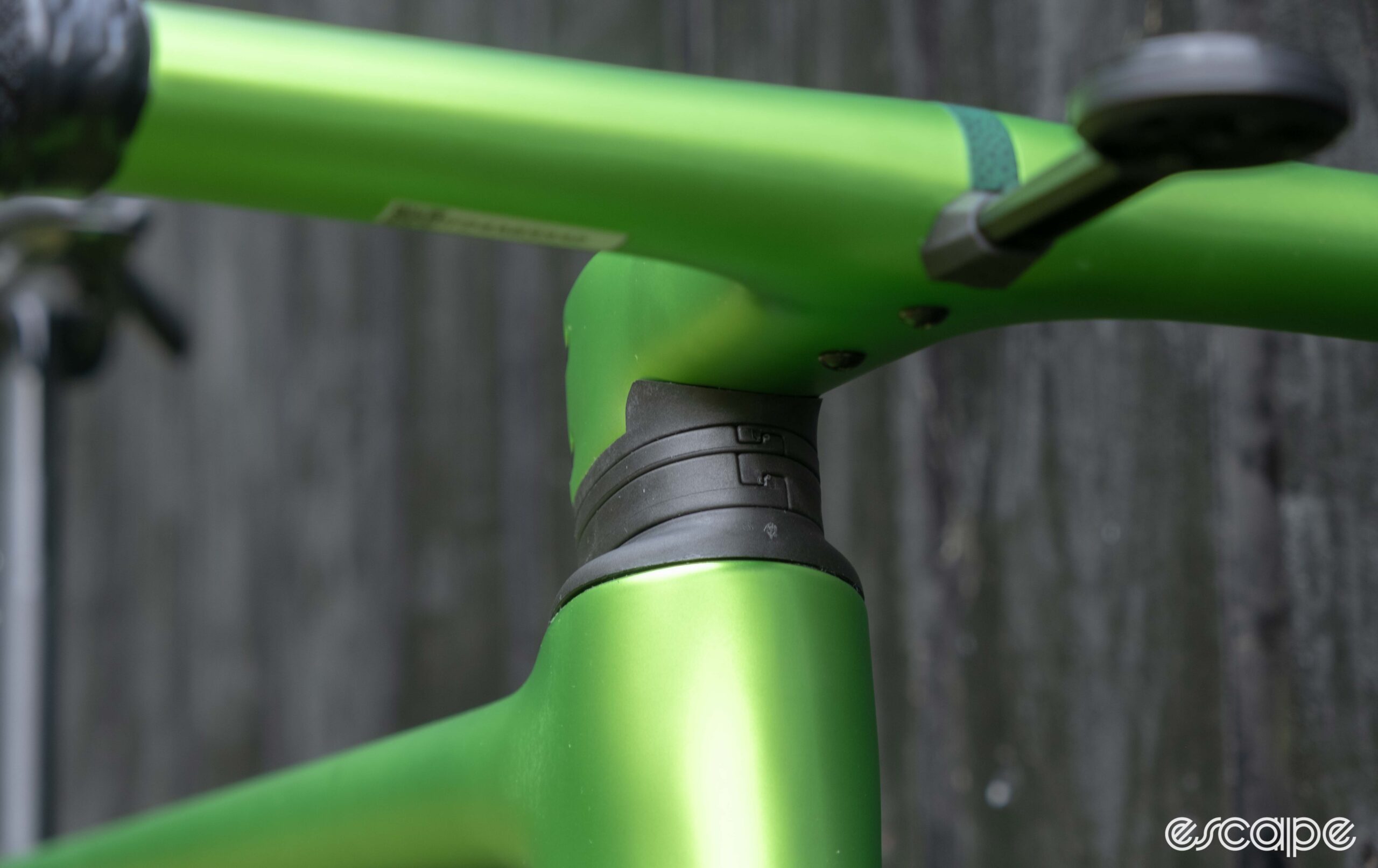
There are further noteworthy updates to the stem portion of the new bars, including a rubber insert designed to prevent sweat ingress through the gap at the stem clamp. There’s also a rather sealed-looking spacer/cap design under the stem, further reducing water and dirt ingress even if not entirely eliminating such issues. And finally, speaking of the stem clamp, Wilier says it redesigned this area to better distribute clamping forces on the fork steerer.
I know I said finally earlier, but extra-finally, a special mention for the fact the stem and steerer tube are both compatible with standard spacers. So while the Verticale features split and proprietary spacers below the stem, traditional round spacers work perfectly fine above for positional experimentation.
Aer-no?
Although Wilier didn’t make any aero claims with the new bike launch, I was aware it did take the Verticale to the Silverstone tunnel and pressed for some results. The brand didn’t initially provide any actual figures, simply stating the new bike showed a slight decrease in CdA versus the Zero SLR, presumably thanks to small aero tweaks – intentional or indirect – such as the ridge along the shoulder of the down tube or the overall width reduction in the seat post and forks. Ultimately, Wilier confirmed the saving was between a CdA reduction of about 1.2-1.9% at 50 kph at 0, 5, and 10° yaw, while at 15° the difference was 0.2% in the Zero’s favour.
Wilier was keen to stress, though, that aero was not the goal here and that it believes there are far greater savings on offer in aiding the rider to adopt a more aero position with the new bars. Obviously that is true, but the answer does feel like deflecting the question given that aero improvements on the frame could compliment those bigger savings on the overall system. Clearly, Wilier believes the compromise aero brings to the other characteristics are not worth the gains on a climbing bike.
Geometry
So far we’ve covered how visually and subtly different the new bike is but Wilier describes the changes to the frame reach as “the first great difference compared to the Wilier 0 SLR.” Personally, I think there are much more significant differences, but nevertheless, Wilier has slightly shortened the reach for the XS and S sizes and increased it for the L, XL and XXL sizes, all while keeping the same the stack figures.
Wilier retains its Accufit fit system, which in simple terms was the stack and reach figures to the centre point on the tops of the handlebar. Combining the new frame reach figures with the V-Bar dimensions, Wilier extended this Accufit system to include both the original C0 point (the distance between the bottom bracket and the centre of the bar tops and stem, the point previously known as the Accufit Point) and now also what it calls the C1 point which refers to the point of the midway point of the drop curve behind the lever mounting position.
Both the new frame reach and the new V-Bar dimensions were developed in collaboration with Wilier’s current WorldTeam partner, Groupama-FDJ. Wilier claims the various combined frame and handlebar size options eliminate the need for custom geometry as the jump between C0 and C1 stack and reach figures, or in other words, the rider’s hand contact positions, is never more than a 2-3 mm.
There are other very minor tweaks to the geometry that Wilier didn’t specifically mention, but are notable in the geometry chart. Take the size large I had in for test: the Verticale wheelbase is 3 mm longer than the Zero and despite that 2 mm longer reach and a similarly lengthened top tube, the head tube angle is ever so slightly slacker at 72.5°.
Readers of my reviews may already know the importance I believe the trail has on the overall ride impressions and handling characteristics of a bike. Wilier do not typically publish fork offset or trail figures for their bikes but happily provided them on email. Much like the new Dogma F presented last week, Wilier adopts just one 46 mm fork offset across all six frame sizes. As such trail ranges from 73 mm on the smallest size (XS) all the way down up to 54 mm on the largest (XXL) That works for me as the 60 mm trail of a size large is just a tad on the more-stable side of the trail I typically appreciate without compromising the snappy handling one might expect from a stiff, lightweight, climbing-focused bike. The same can’t be said of the 73 mm trail on those XS, but admittedly I am not qualified to comment on whether that trail is offset by the shorter wheelbase or overall lighter package, and toe overlap on small sizes is always a consideration in geometry design.
Let’s ride … not race
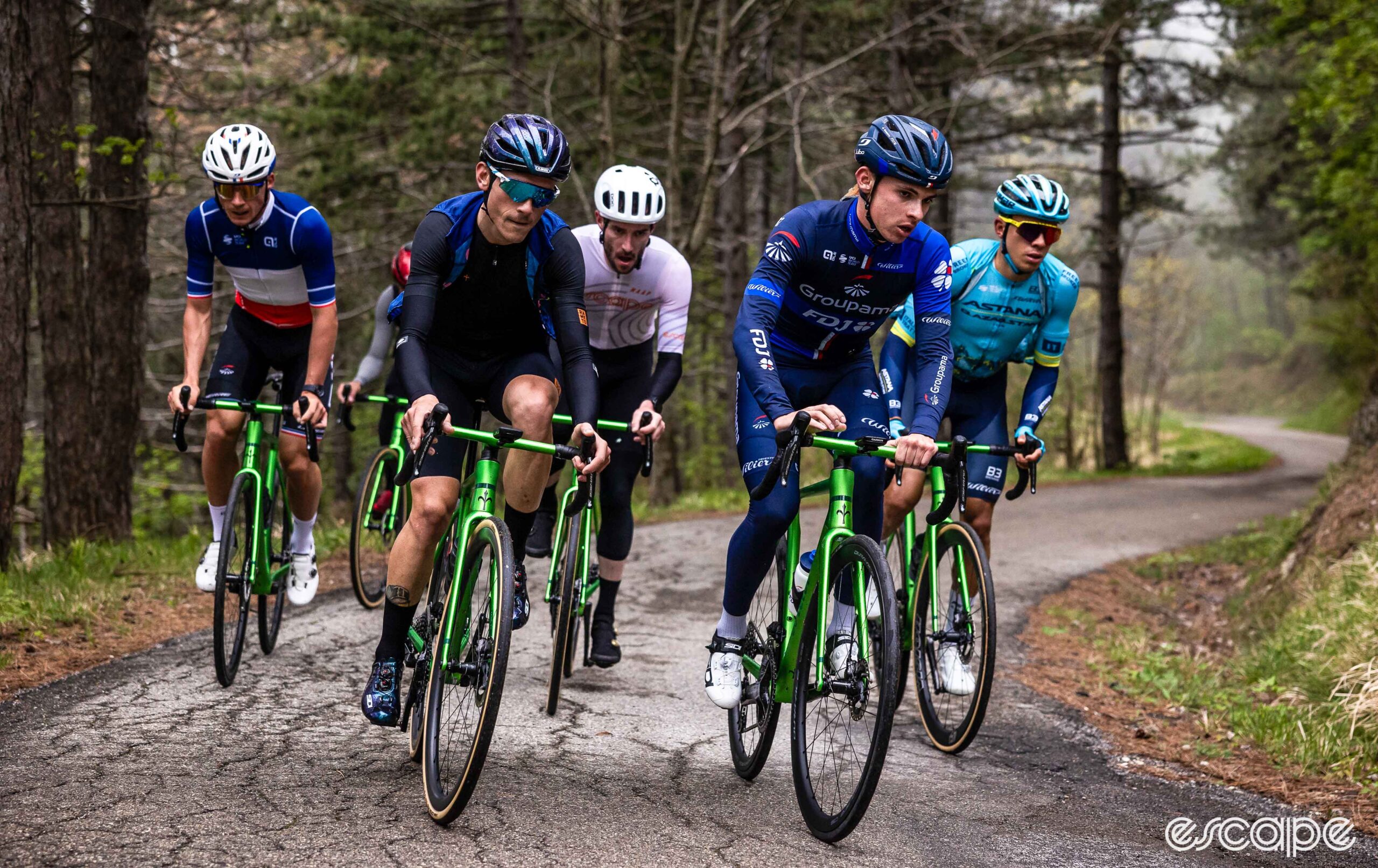
All told, Wilier claims the Verticale SLR is its lightest-ever disc brake bike. As you’ll hear on this week’s episode of the Geek Warning podcast (coming Thursday), I appreciate that Wilier has made this bike and sticks with the dual-bike approach with dedicated aero and climbing rigs. I also like that given the climbing focus, this new Verticale, retains a classic aesthetic with round-ish tubes and high-attaching seat stays and incorporates the modern and clean look a fully internal-routed cable system offers.
As much as I like to aero optimise and geek out on marginal gains wherever possible, I appreciate the style and elegance of a classic-looking bike. Wilier has incorporated that classic styling into a modern bike offering plenty of design optimisation along with the benefits of wider tyre clearance, disc brakes, and again, the internal hose routing and wired-less shifting.
It’s this panache meets modern performance that I believe is the Verticale’s strongest suit. Would I want it for racing? Definitely not, even if I was a Pantani-esque climber. But if I wasn’t racing or performance-focused, if I wanted a bike that was fun to ride, made me feel like Pantani, and offered classical styling in a modern package with little to no faff or silly stuff, the Verticale joins a very limited club with just the Aethos and perhaps a select few others that I’d consider purchasing.
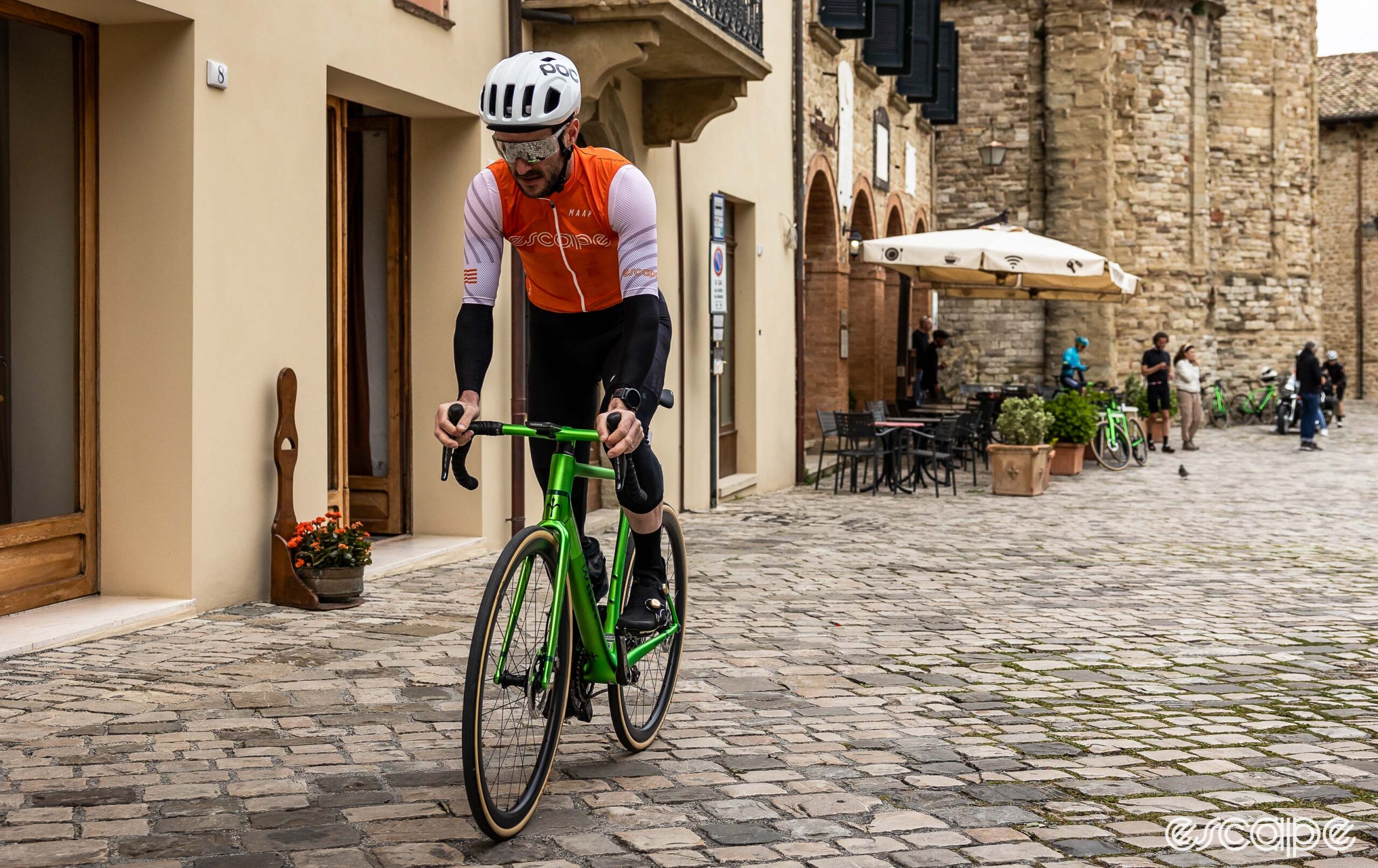
Why so? Of course, looking pretty or classical isn’t enough on its own, and furthermore, beauty is only in the eye of the beholder. But the Verticale’s ride characteristics really impressed me also. Unsurprisingly, it feels light and nimble on the flat but doesn’t feel fast like an aero bike might, and I presume if we chucked it in a wind tunnel it probably isn’t fast. But show it an incline or a descent and it comes into its own.
The combination of low weight and lateral stiffness combine to give that sensation of every pedal revolution jolting the bike forward and up even the steepest gradients like only a true lightweight climbing bike can. It’s mostly a sensation, and I don’t believe it actually translates into any increase in speed, but woah, does it make you feel good. Couple that with the responsive but precise handling and the Verticale’s composed attitude even on rough, broken surfaces and the trip down the other side of the mountain is even more fun.
I’ve a test loop I take all review bikes on, usually countless times during a review. It loops around the short punchy hills near my back door and finishes with a pan-flat dual carriageway section back to the front door. There is one off-camber, smooth-ish downhill junction that kicks up and turns to a really rough surface right at the apex as I cross onto the adjoining road. I call it golf ball corner, because it’s alongside a golf course and as I’ve found out, some of our friends on the greens’ shots are just as wild as this corner is at speed.
I know the corner can be taken at speed without braking – if I get the line right and exit the corner without getting spat out into the ruts through the middle of the road. With some bikes that is one heck of a bare-knuckle ride, while others sail through it relatively well. Nothing has made that corner feel as tame as the Verticale. It’s precise enough to chuck in on the perfect line every time, and the front end is stiff enough to handle whatever mini-G force I’m experiencing as I go from downhill smooth on entry to uphill, adverse camber, and rough on exit. Just as other bikes wander towards the centre of the road, the Verticale holds the line without faltering. This is one lengthy paragraph about a single fairly mundane corner, but having ridden it a thousand times or more, I knew on my first time through it on the Verticale that this bike handled well.
Part of what impressed me and honestly perplexed me was just how well the Verticale tamed what I know is one heck of a bumpy ride through the exit of that corner. The Verticale offers no ride compliance or comfort-improving features other than the incredibly thin and round seat post which does offer plenty of cushioning flex over harsher bumps. But being a light and stiff climbing bike, you’d be wrong to expect a carpet-smooth ride. It’s a stiff racing bike and feels as such. That said, it’s a much smoother ride than you’ll find with almost any aero bike and nowhere was this more evident than, again, through this corner. Undoubtedly, as is always the case, the tyres, tyre width, and pressure do most of the heavy lifting here. Bump up the pressure and the Verticale will rattle you silly, but lower it, and especially on the stock 30 mm tyres or larger 32s, and the Verticale rewards you with a smoother ride and stacks of confidence.

It’s funny I’ve spent most of this ride review of a climbing bike talking about how it corners and descends, but that’s just a reflection of how fun it is in those conditions. But just like Pantani, the Verticale is not perfect. Thankfully the Verticale’s imperfections are much more minor; I’ll start with the wheels.
And by wheels I mean more than just the wheel set. The Miche Kleos RD 36 are not a bad wheelset, but they simply don’t match up to the rest of the bike. At close to 1,400 grams for a 36 mm-deep rim, they add 100, maybe 200, grams to what we’d expect compared to a wheel set we might expect on a £12,500 climbing bike. They are also not quite as stiff or lively as the frame module and annoyingly they’ve a ping or tinny-like rattle as you ride along that at first I thought was just the spokes settling, but which never went away. It’s mostly only noticeable out of the saddle, but you tend to be out of the saddle a lot on a climbing bike. The only thing I can attribute this to is mis-tensioned spokes pinging off each other at the cross.
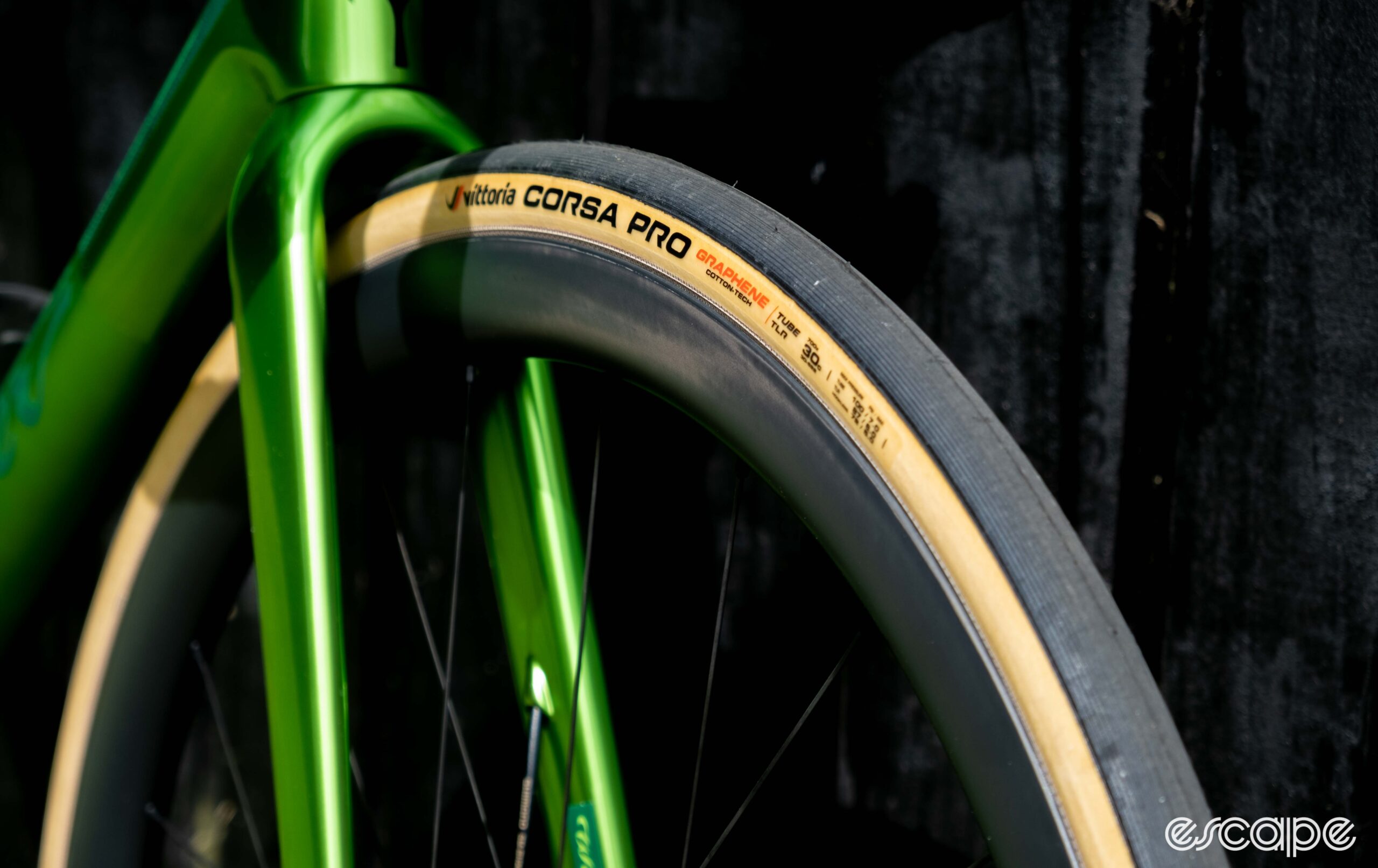
To Wilier’s credit, they’ve added an 11-34 cassette to those wheels and wrapped them in 30 mm tyres, neither of which work wonders for the overall weight out of the box but are undoubtedly the correct sizing in my opinion. Add those larger combinations to the already slightly overweight rims, and the result is a kind-of-deflating 6.8 kg bike out of the box before adding pedals. Deflating because 1) Wilier was targeting 6.8 with pedals, cages, and a Garmin mount and 2) because that means a 7+ kg bike when pedals are added.
It would have been easy for Wilier to follow suit with other manufacturers and spec 25 mm tyres and a smaller cassette just to help with the shop floor weight-check test, but to do so would have been a disservice to the rider who goes ahead and purchases a Verticale. Those wider tyres and the wider range cassette play a huge role in everything good I mentioned above about the new Verticale. The Hulk Green paint job does also add around 80 grams in this size large and just for the record, I swapped out the stock wheel set for Enve 2.3s with Continental GP 5000 TT TRs with an 11-30 cassette and the resulting bike weighed 6.7 kg with Speedplay Zero pedals, Garmin mount, and Elite bottle cages included.
The V-bars are neat and the matching paint work brought plenty of remarks. Wilier says it has reworked the internal routing for the brake hoses through the tops, but still I’d have much preferred to see externally routed but hidden hoses that run outside the bar and stem for easier changes. That said, the roundish and narrow profile on the tops is a dream in my palms and feels like a good old-fashioned tops climbing position.
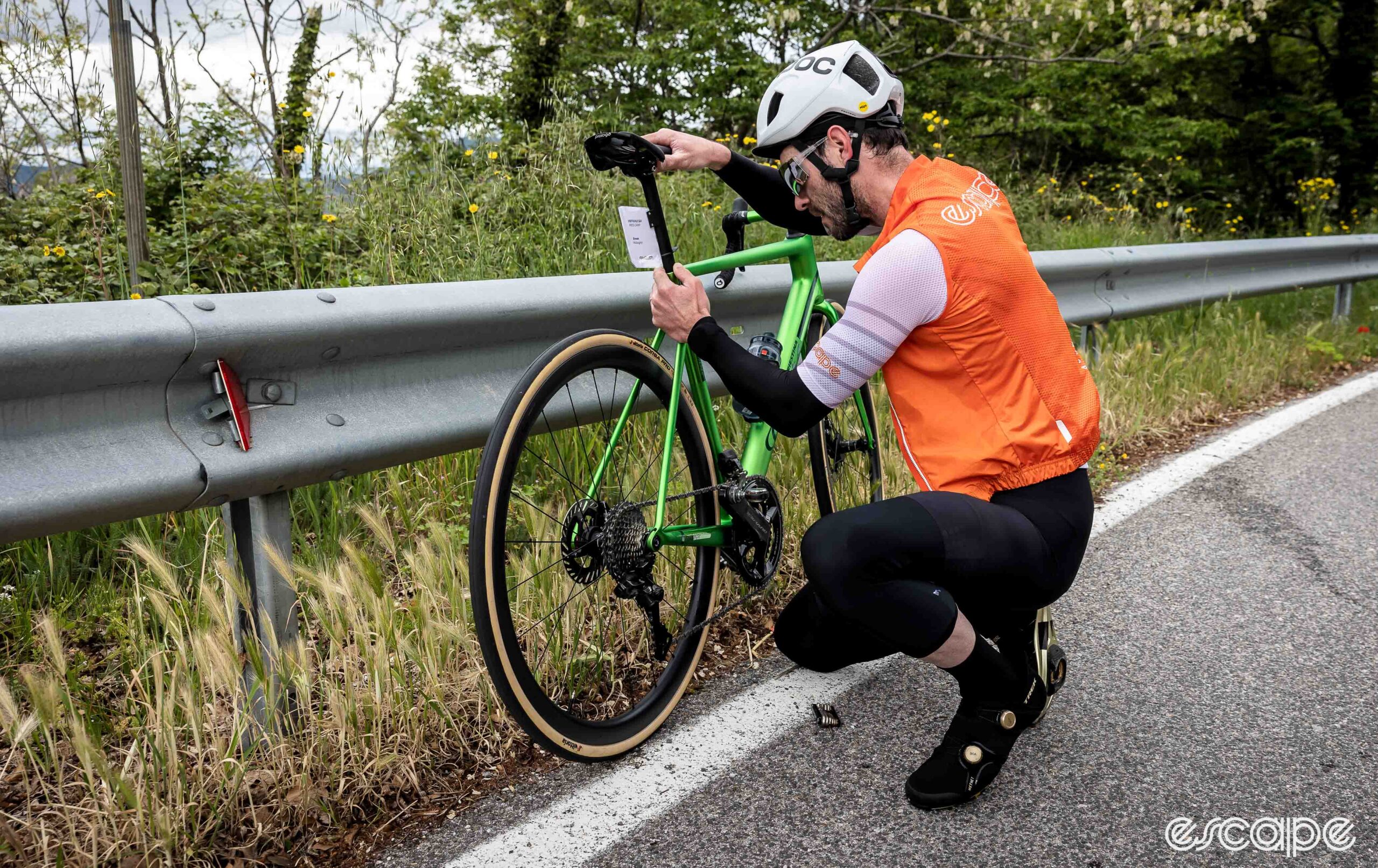
The Verticale does also feature a few of my pet peeves; nothing major, just “meh” stuff. Stuff like a single bolt-style seat clamp, not having torque specs printed on the stem and seat post clamps, a sticky seat post that isn’t conducive to my constant saddle height futtering, and the thru-axle heads being on opposite sides with the front on the drive side. Wilier explained the decision to move to a drive-side front thru-axle head came with the move to Mavic’s speed release axles a few years back and the decision to stick with it comes about as the pro teams do not want a mix of sides across their fleet confusing and potentially slowing down wheel changes. There’s also still a press-fit bottom bracket, but truth be told the Miche Integrale RD bottom bracket, which sees both press-fit sides thread into each other, so far hasn’t made as much as a squeak.
Then there is the pricing. The Verticale is available in six sizes with four different colours. The frame module is priced at €5,800, £5,500, US$6,900. The top-spec bikes with Shimano Dura-Ace Di2 and SRAM Red AXS (both including power meters) will set you back €13,000 / £12,500 / US$15,300, although the Dura-Ace build is offered without a power meter. The priciest option is with Campagnolo’s new Super Record wireless group, at €13,400 / US$15,700 (UK pricing is not available). Finally, Shimano Ultegra Di2 and SRAM Force AXS builds start at €9,900 / £9,000 / 12,100 (here, it’s the Force build that is offered with or without a power meter). Needless to say, those are quite the high price tags. I’ve really enjoyed the Verticale SLR and it rides sublimely, but, I just never had the feeling this was £12,500 worth of bike … perhaps it was the green paintjob. The Velvet Red and Black Core definitely looked a little classier/richer and perhaps as such closer to what you might expect with a such a lofty price tag.
Speaking of paint, Wilier undoubtedly offers some of the sweetest paintjobs available today. If this was my bike, I’d be wrapping in frame protector all over prior to assembly. So far the Hulk Green has stood up to everything Irish roads could chuck at it, including slight gravel excursions and freshly laid chip stones. That said, one small hairline paint crack did appear at the stem bolt, Wilier claims this is only due to rushing these media/review bikes through the paintshop and will not happen on consumer bikes when the painter takes much more time to complete each spray.
Finally, the Verticale was delivered to me with a bent dropout. No big deal, and that could happen to any bike in transit. I straightened it, and Wilier quickly replaced it, but I don’t know if it was due to this specific dropout being bent or not fully tightened but either way, I had several instances where I simply couldn’t get the rear thru-axle opened as the hanger was loosening itself as I loosened the thru-axle, eventually locking the two in place. I eventually got them out with a combination of securing the derailleur hanger and dropout, but it is 1) a known issue with UDH-style dropouts and so its occurrence here in what is a very UDH-esque design is hardly surprising and 2) often this problem arises with UDH hangers when the frame dropout is a little oversized or out of tolerance. Regardless, I installed the new derailleur hanger, but did not Locktite the threads as advised because I wanted to see if the problem persisted, and somewhere along the way I lost track of when it last happened because the problem disappeared. Truth be told I can’t remember if I’ve had the issue since installing the new dropout or not, but either way I’ve changed rear wheels several times over the past few days without issue.
All told, the Verticale is not the kind of bike most readers would associate with yours truly. Given my aero tendencies and the Verticale’s complete lack of them, we seem entirely incompatible. But, apparently, opposites do attract, at least given the right scenario. I’d never choose the Verticale for a road race or timed event but those are performance-focused scenarios. Strip away the performance criteria and my bike choices are vastly different. For all my love of performance, I am as much a lover of the panache of our sport … just don’t mix the two. It’s kind of the same reason I can wear a high-vis cargo vest and have a handlebar bag on an aero or even time-trial bike for training: it’s just more practical, comfortable, and conducive to the training goals and environment. But yet you’ll never catch me with a jersey and shorts on race (or KOM-hunting) days.
It’s the same with the Verticale. For as long as I am racing and chasing performance, I will not spend my own money on this type of bike, but if and when the day comes I do leave that performance mindset behind and simply want to enjoy the ride, the thrill of being outdoors, the sensation of feeling fast even if I’m actually slower, I’d chose a light and stiff climbing-focused bike. If that day comes tomorrow, next week, or next year the Verticale would definitely be on my short list. In fact, the only reason I might not buy a Verticale is because I probably couldn’t choose between the Velvet Red or the Core Black.
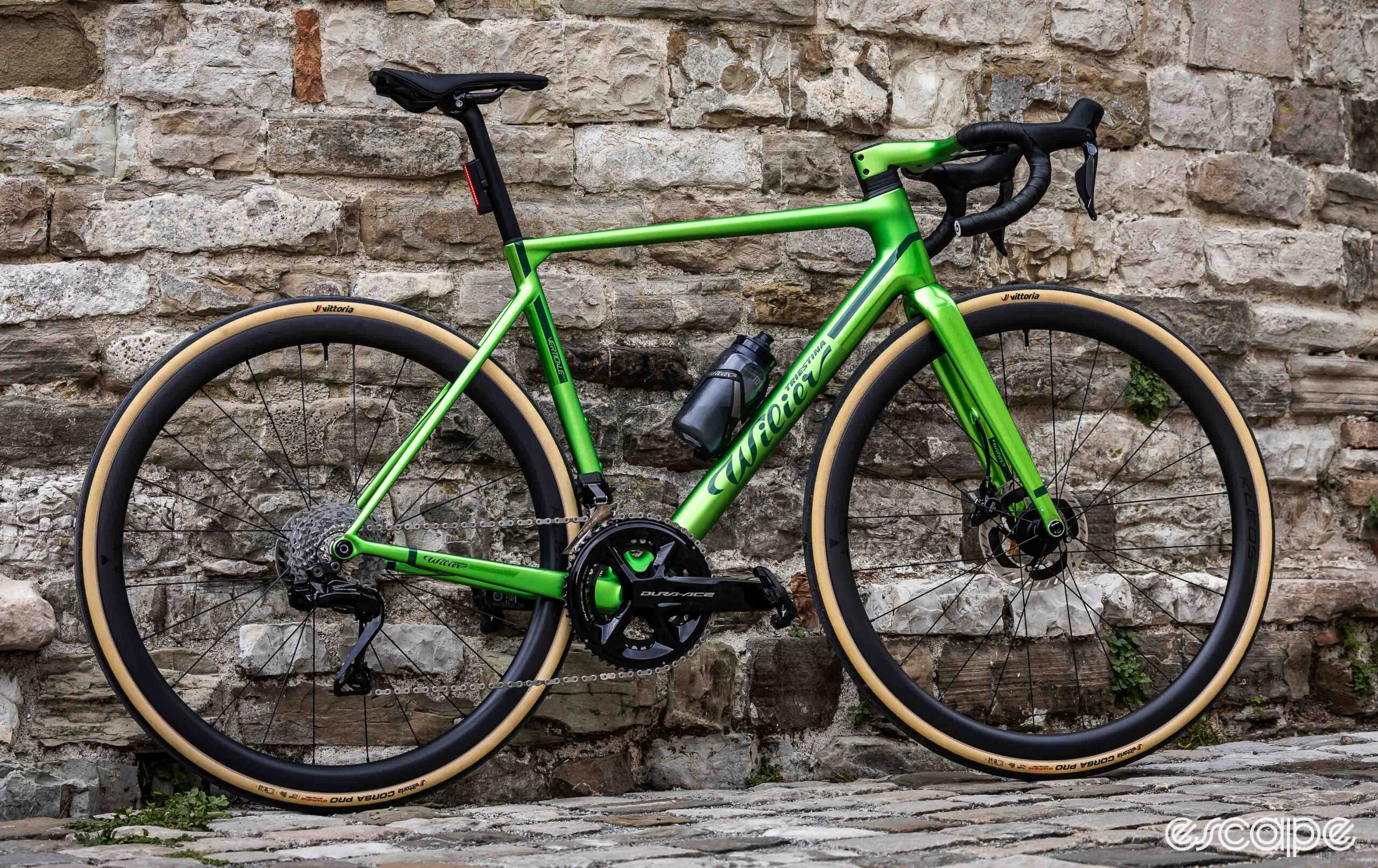
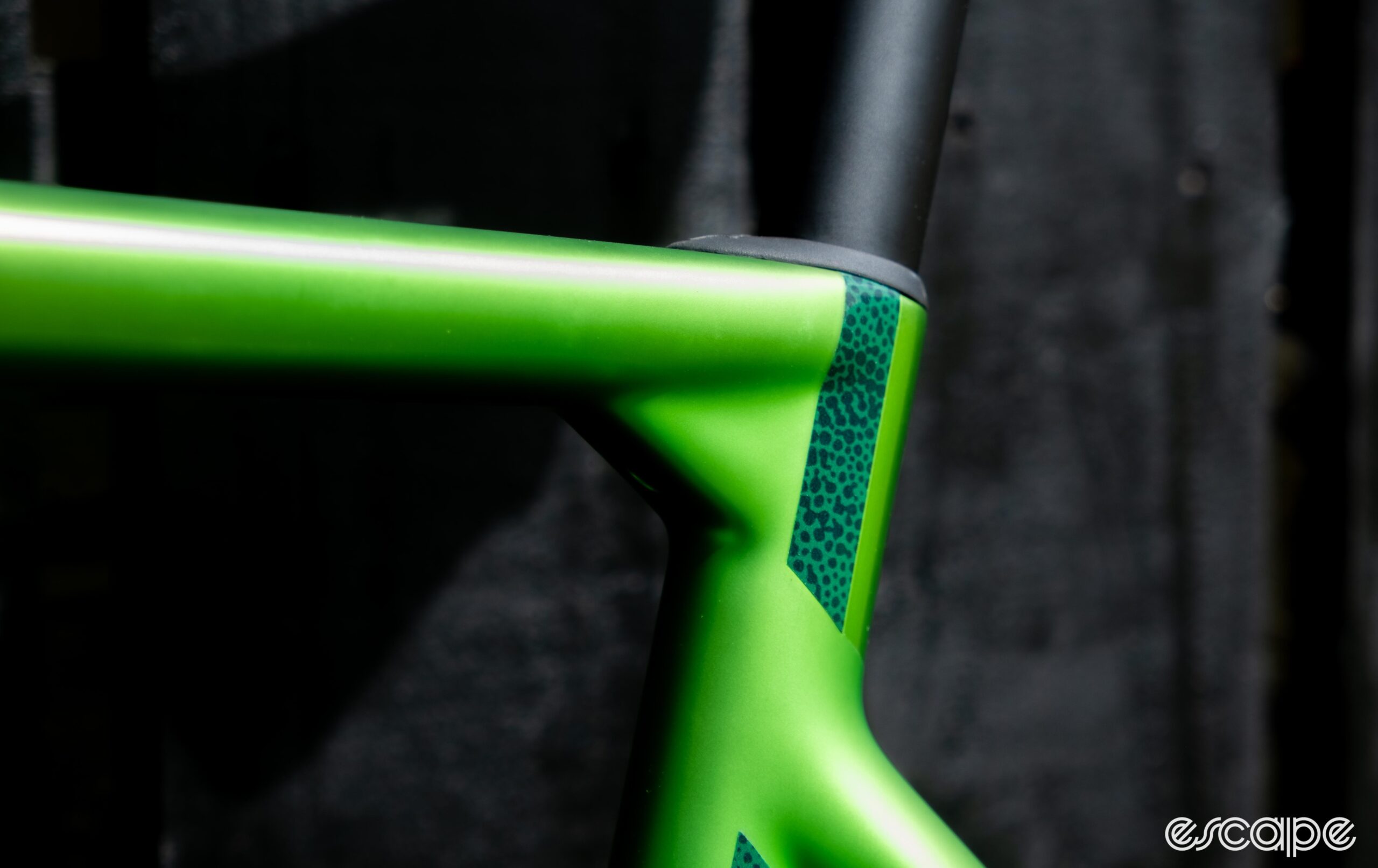
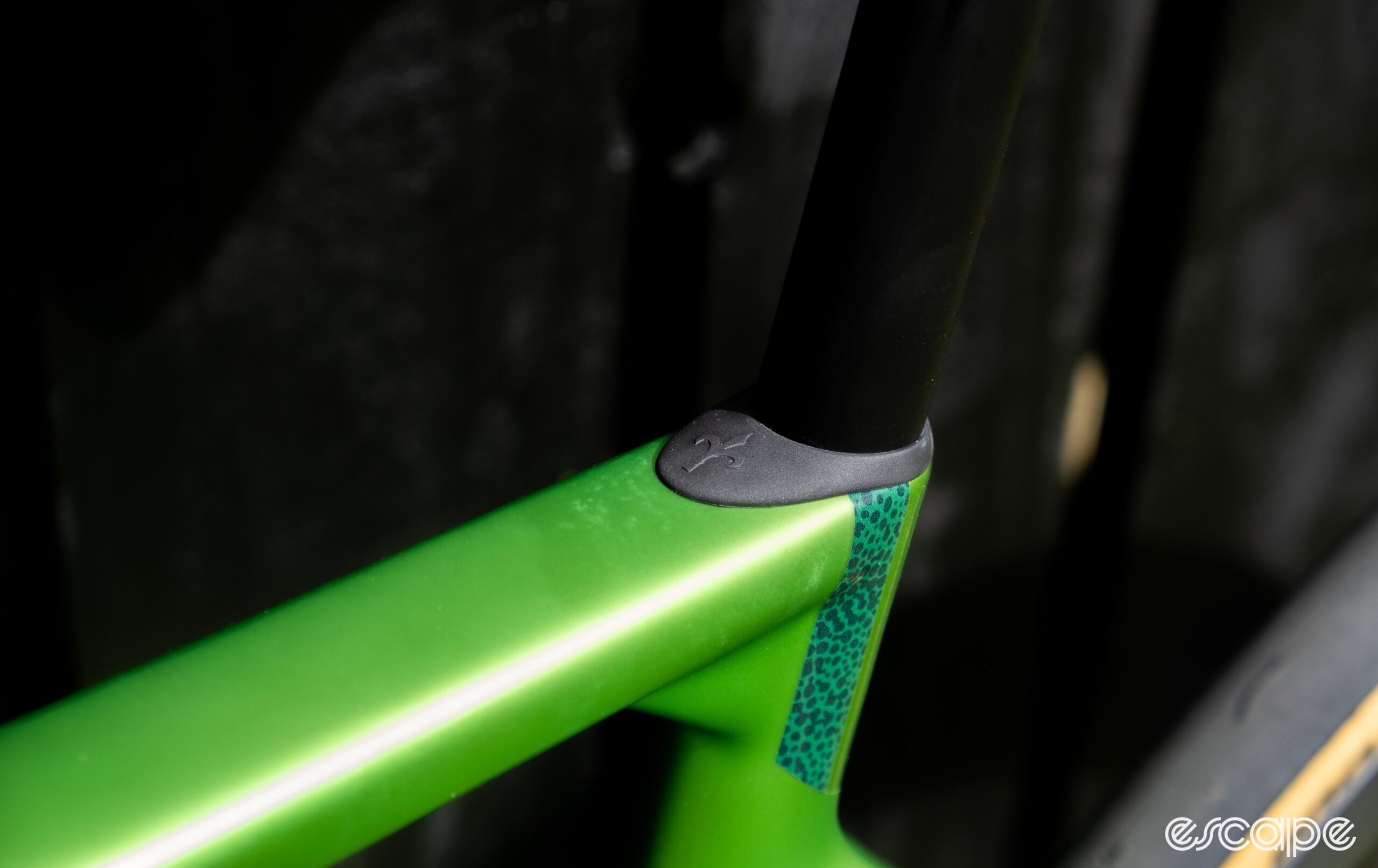

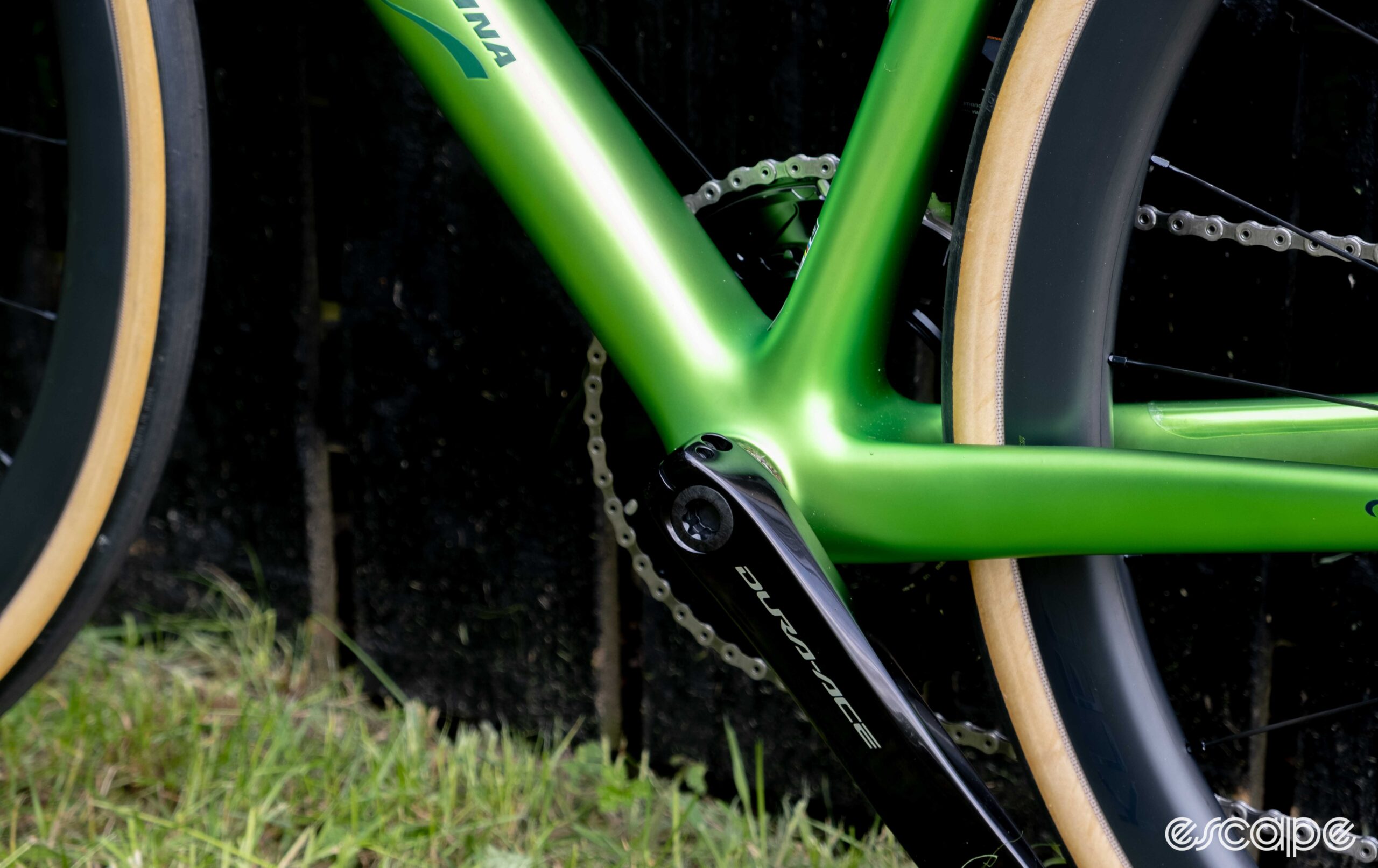
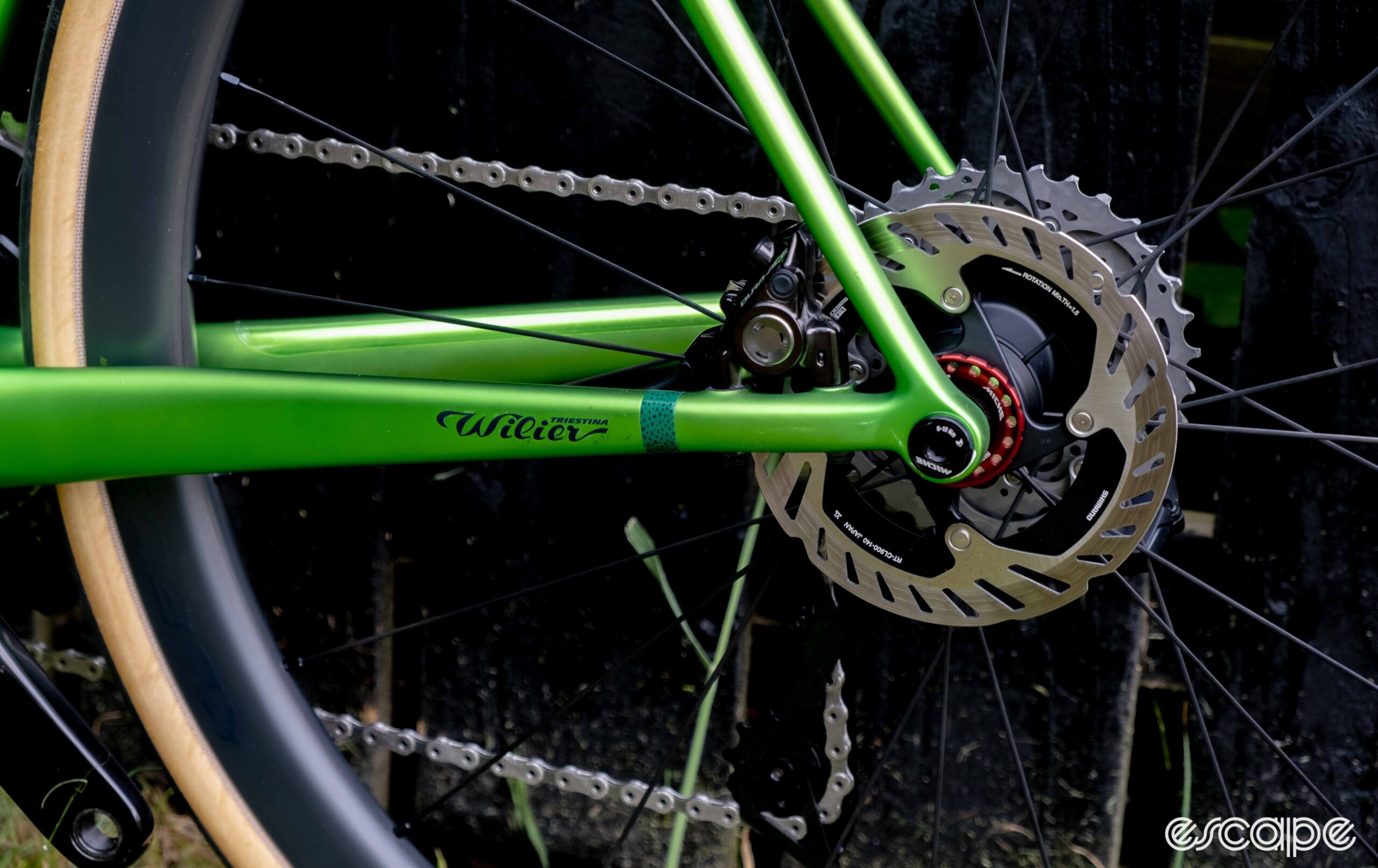
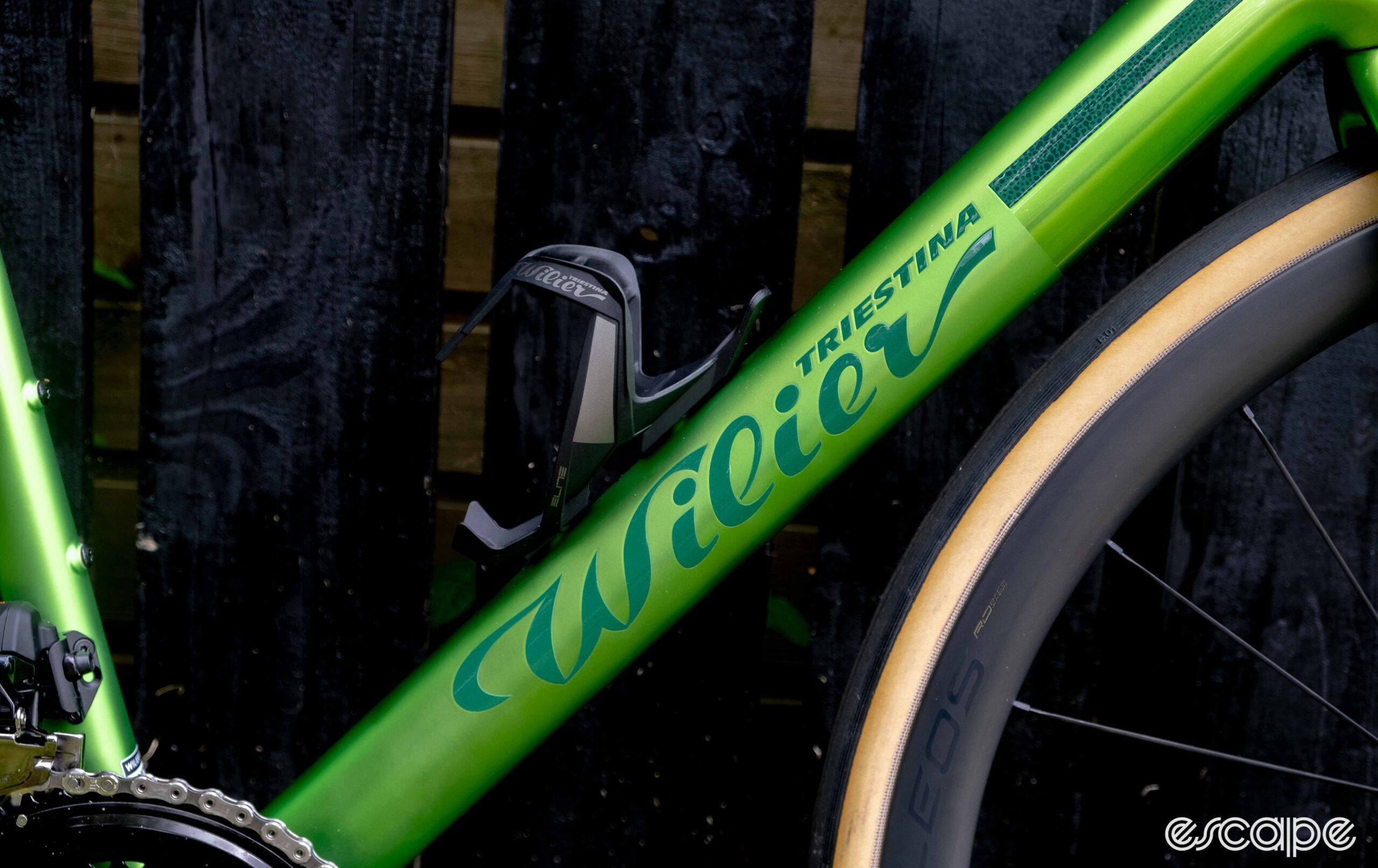
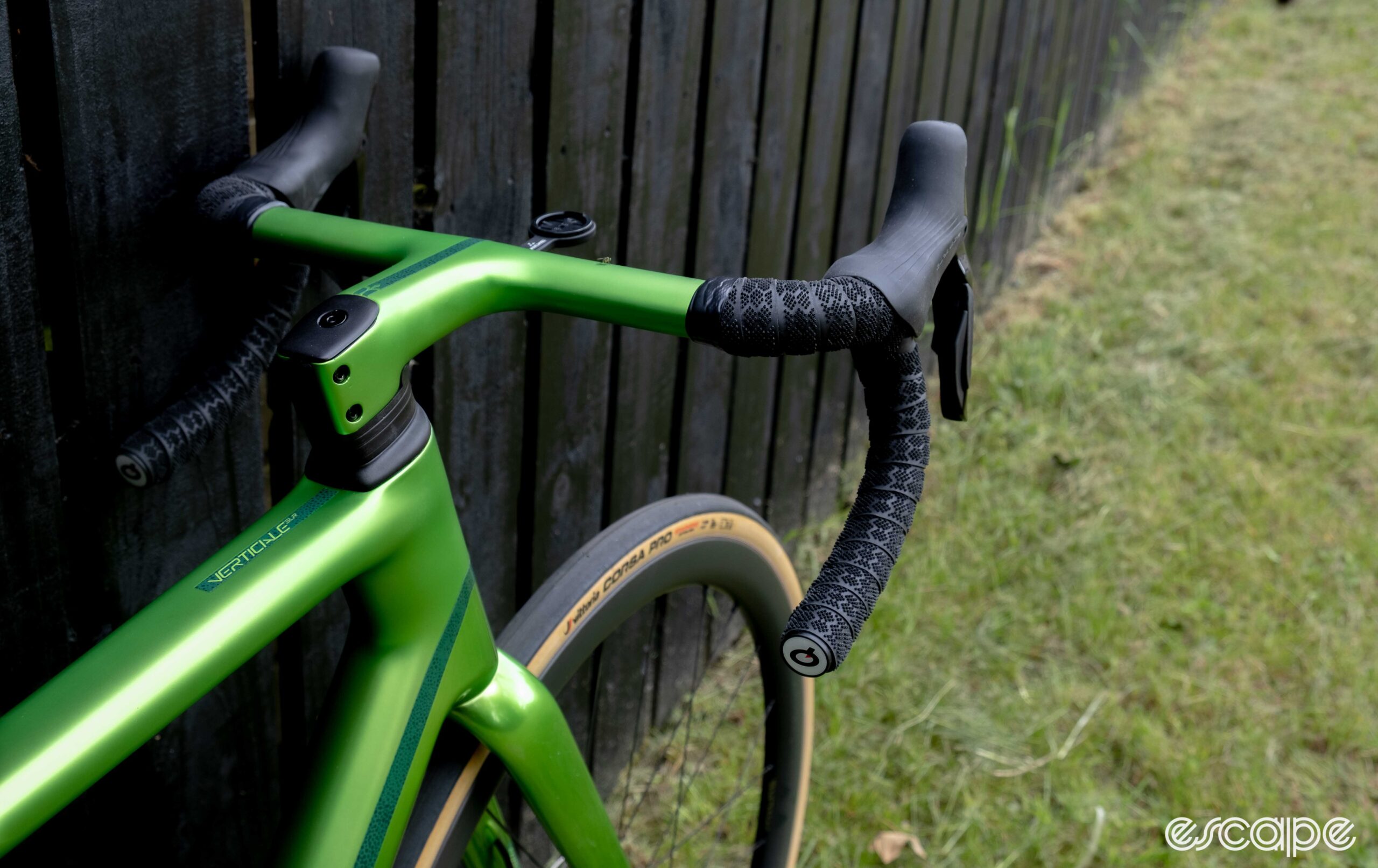
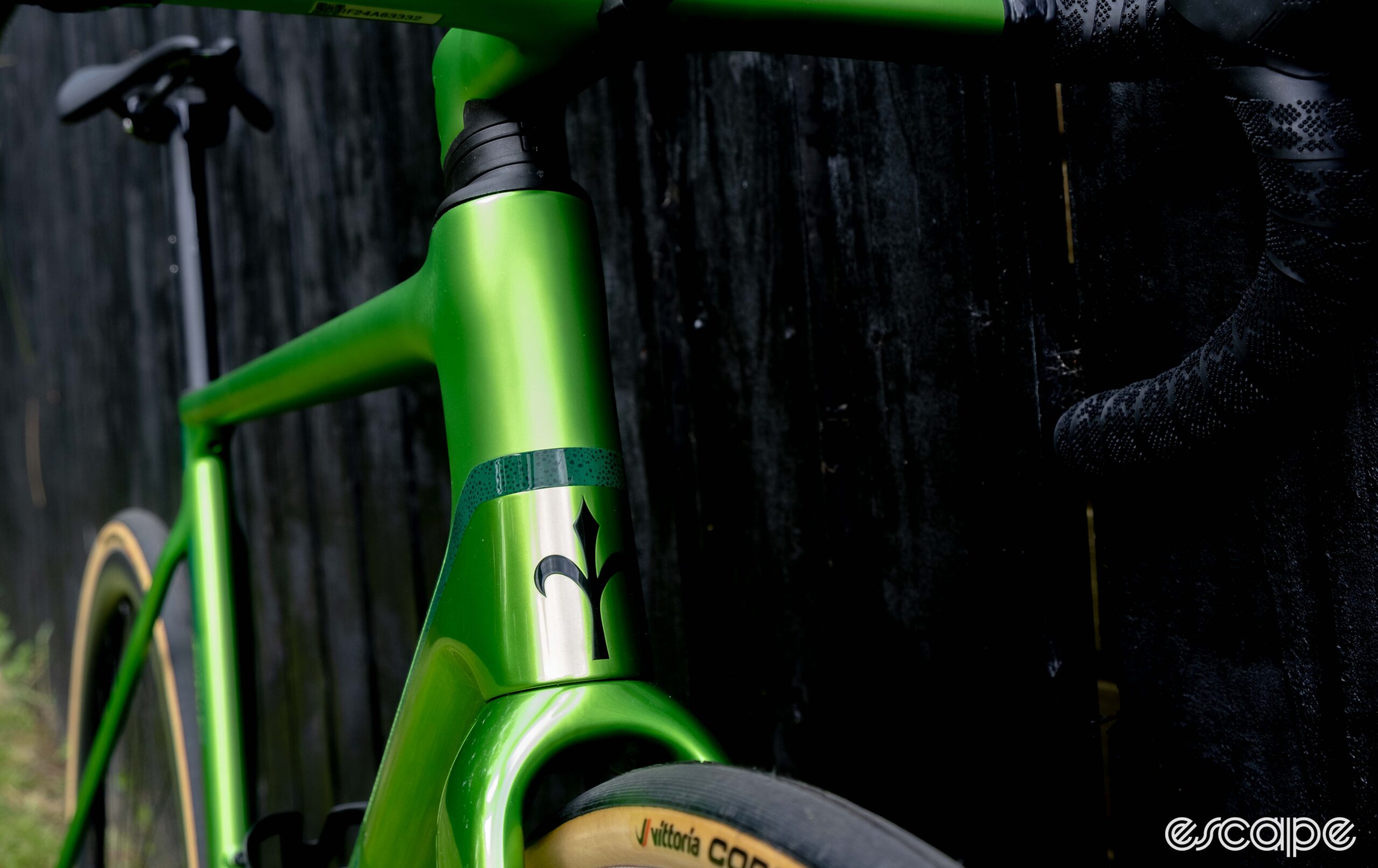
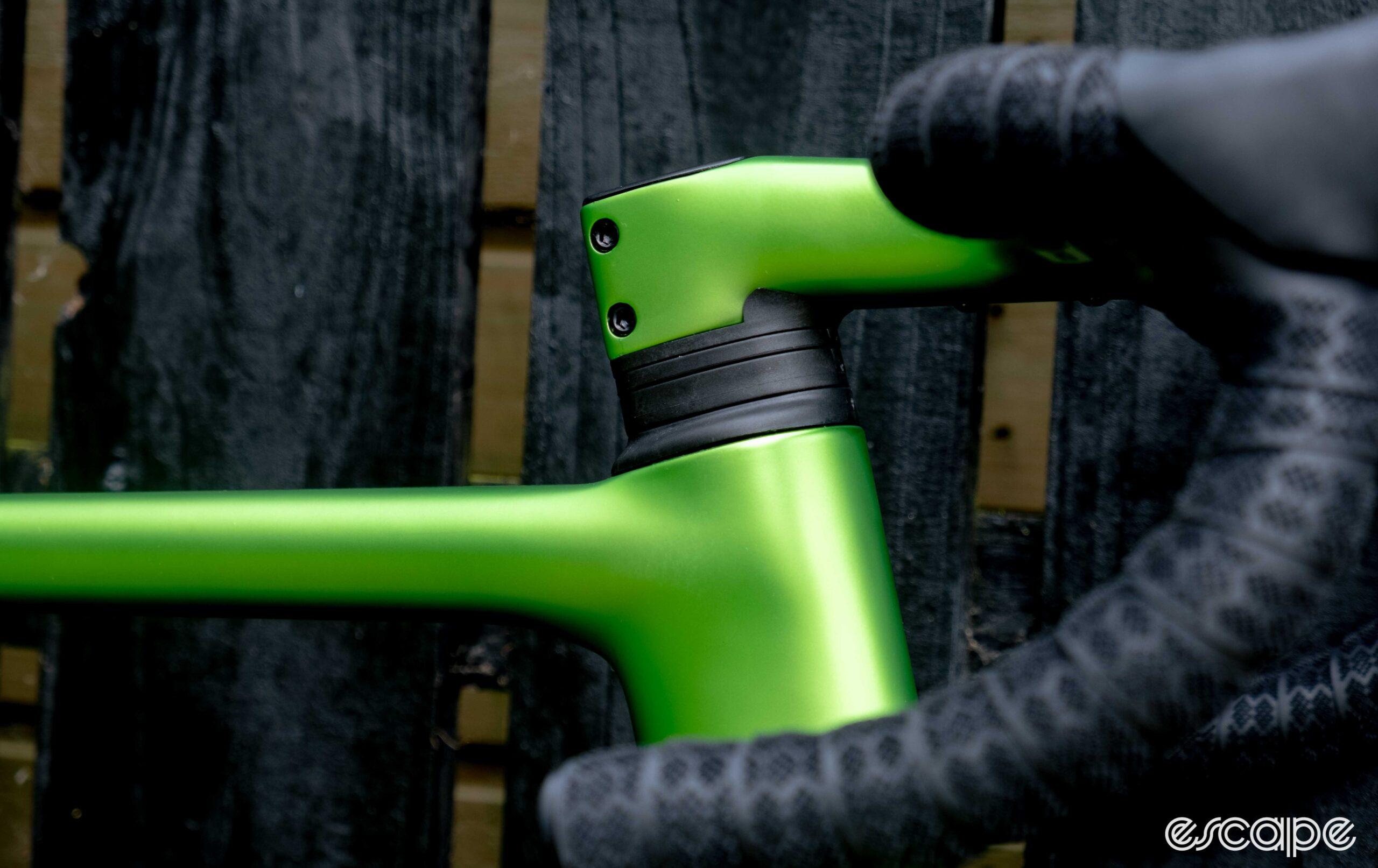
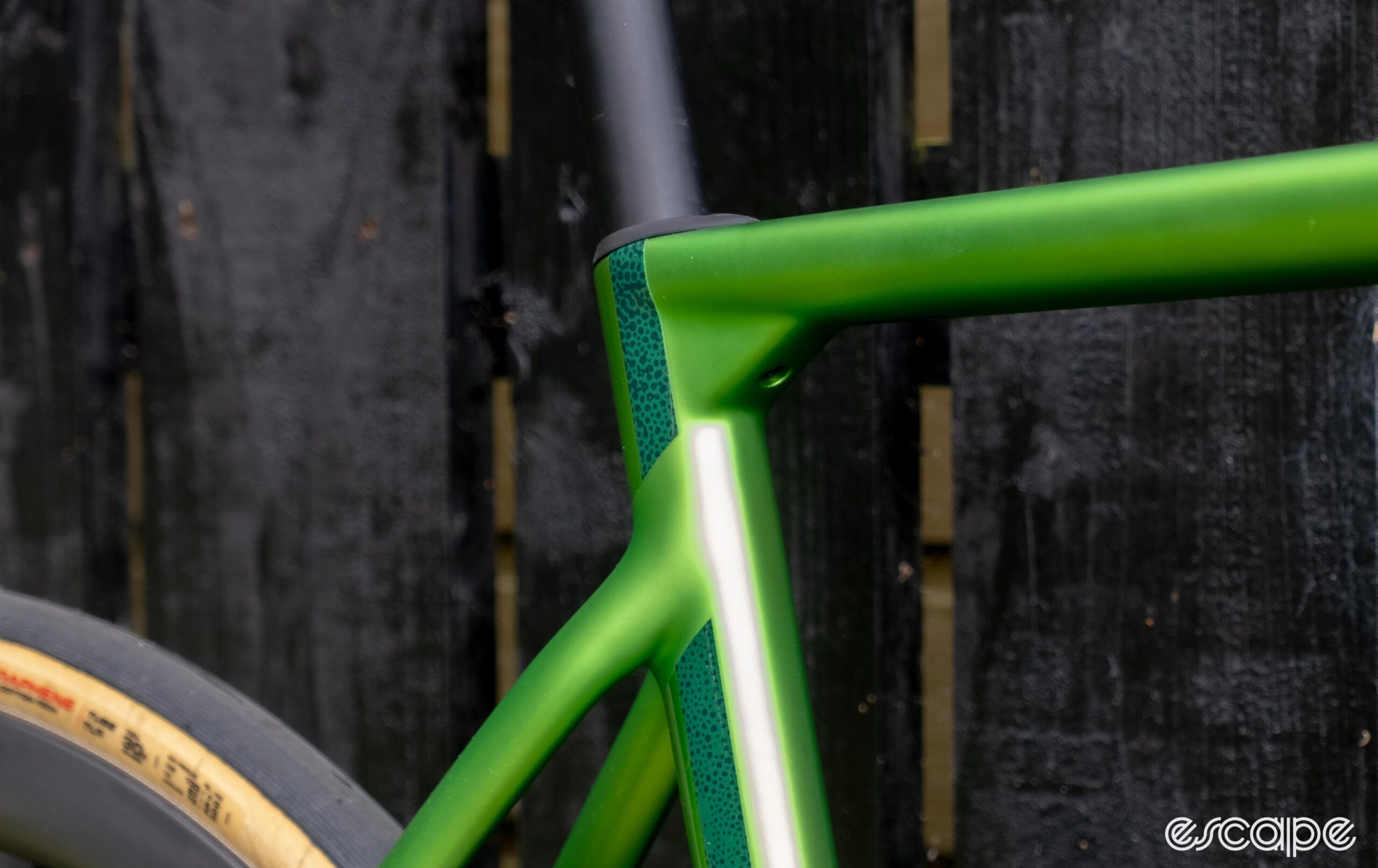

Did we do a good job with this story?
